

Ivana Stefanović - 10 400 words
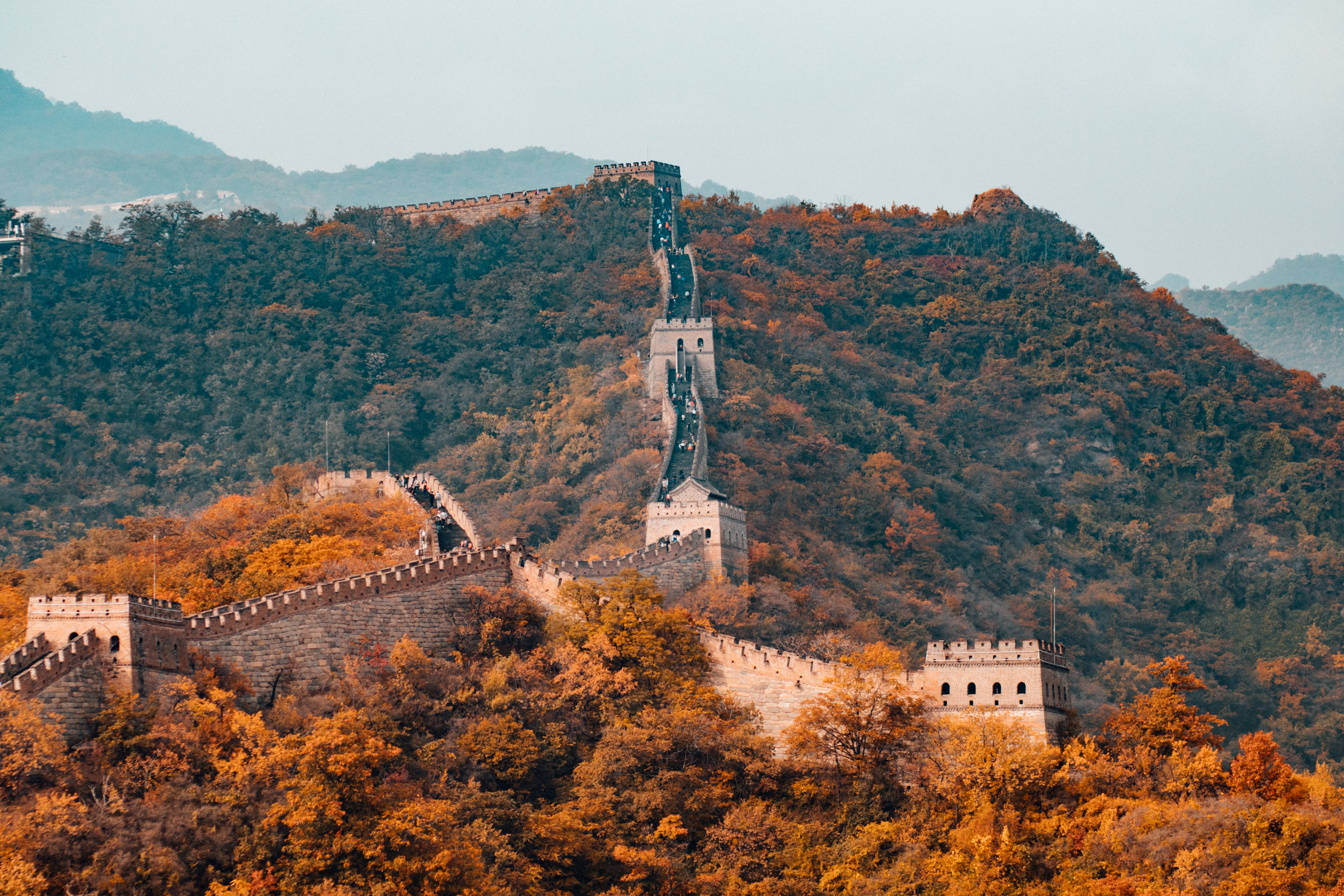
Although the singularity in its name might lead you to think there was only one route to follow, the Silk Road was formed along a complex network of different paths. Given its role in history, the Silk Road was more than a historic trade route. Its glory spanned the globe and never stopped enticing adventurers, myself included. To embark on a journey along one of the Silk Routes means to follow the footsteps of traders, conquerors, historians and explorers. Bear with me as I take you on a trip from Paris to Moscow and then all the way through Central Asia to Beijing.
When thinking about different connections between Paris and Moscow throughout history, there was one that caught my attention. The exotic view to the East came to Parisians in the form of Russian ballet. The Paris Opera has a long history dating back to 1662, but in the second half of the 19th century Paris ballet was overshadowed by the Russian ballet and technique. At the start of the 20th century Sergei Diaghilev introduced the Ballets Russes to Parisian audiences. While some were ecstatic with the virtuosity of Russian dancers and innovation, such as having male dancers as leading stars, others were appalled by mythological plots, folk dresses and music. Nevertheless, the Paris Opera started hiring Russian dancers and allowing changes to the French technique by adding virtuosity and encouraging more male dancers to develop artistically. With the great Rudolf Nureyev who was appointed director of the Paris Opera in 1983 many ballets were revived in the repertoire and the ballet dancers who would become the greatest of their generation mentored.
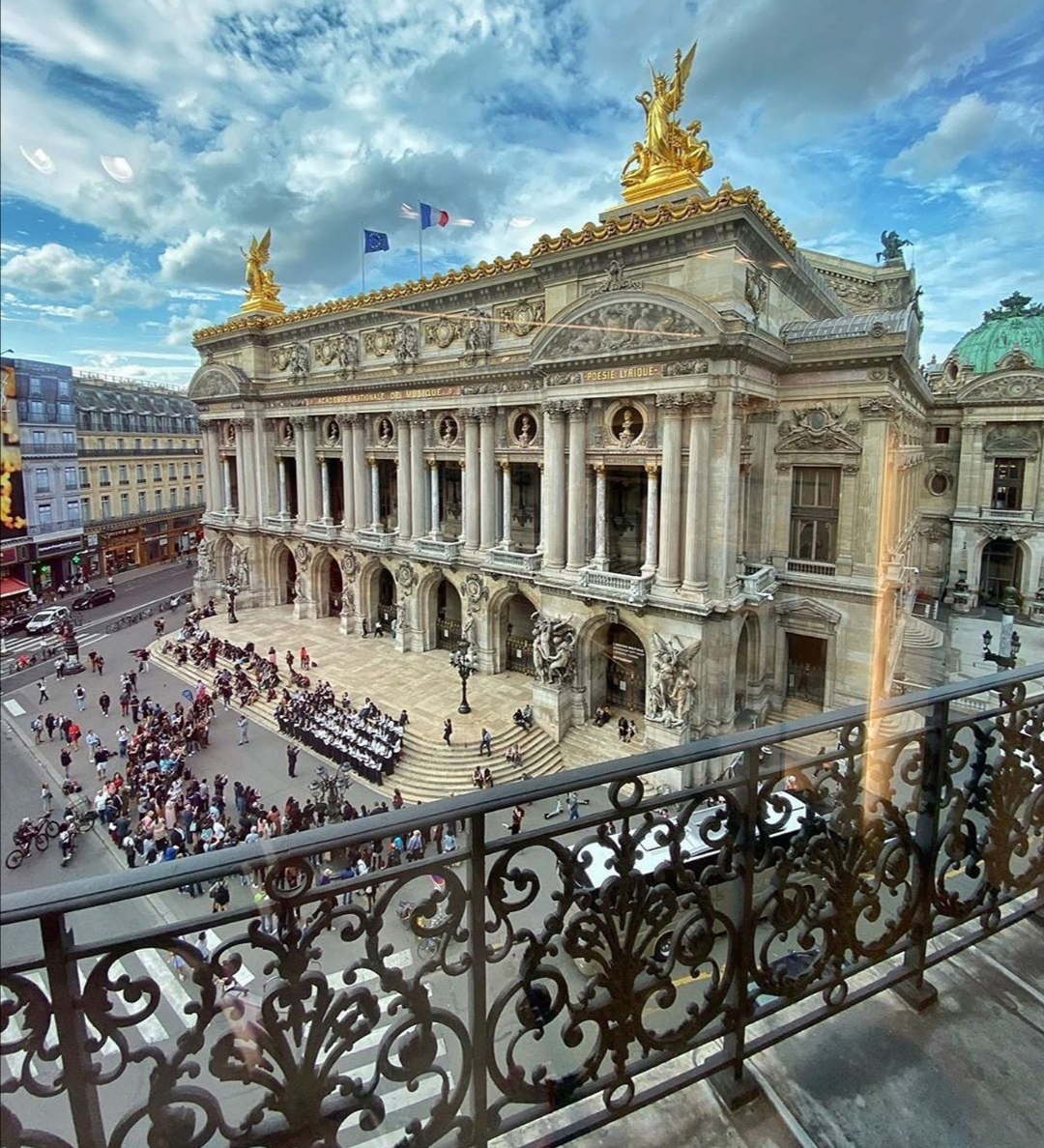
For a memorable night in Paris there is nothing like attending a ballet performance or an opera at the Palais Garnier. Arrive at least 30 minutes early so that you can walk around this impressive building.
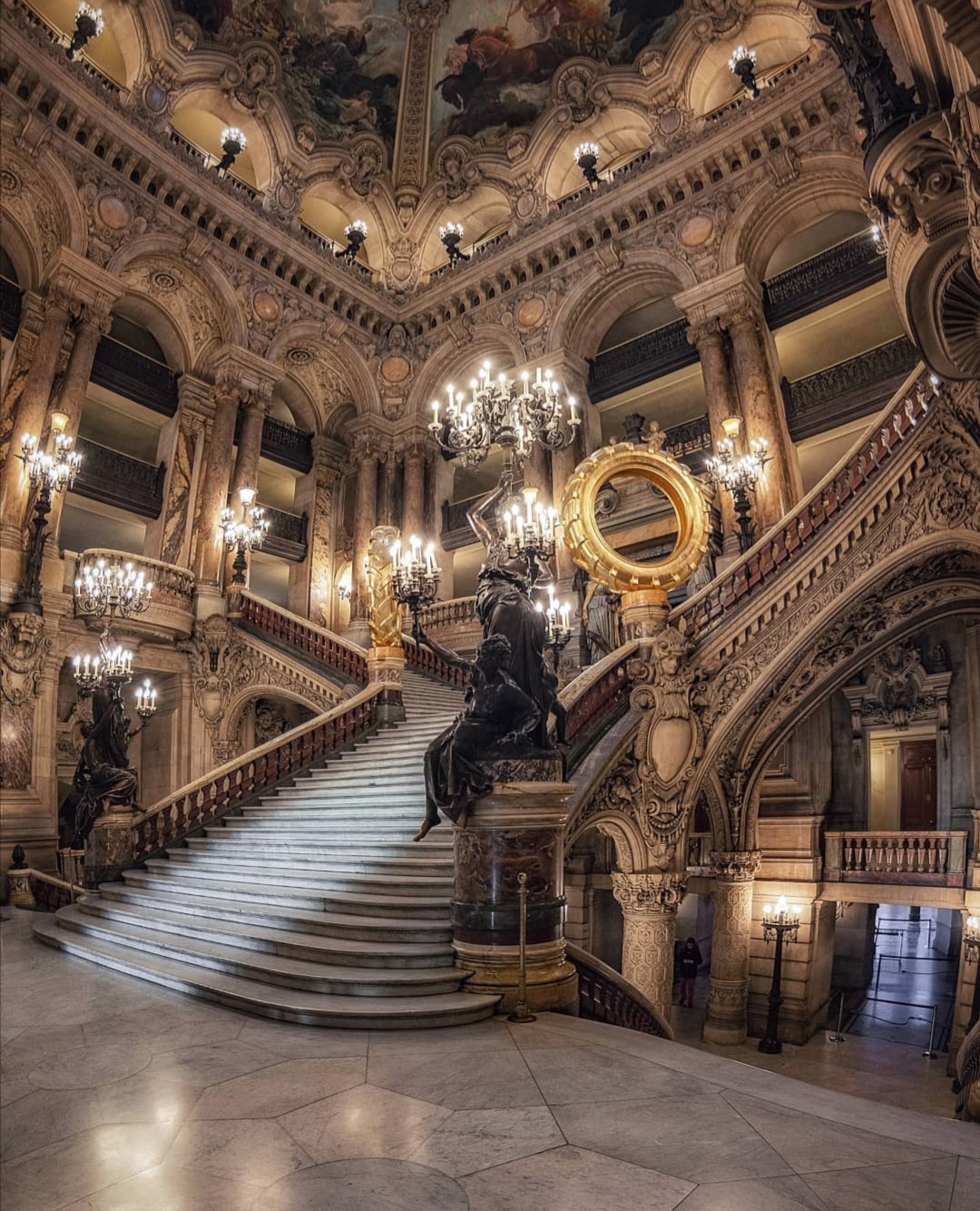
The grand marble staircase, painted ceilings, crystal chandeliers and opulent interior will transport you to a time when the Opera House was the place of social gatherings. People would come to enjoy in music, but also to be seen and to discuss about important political matters. Today, the latter has no such significance, but music and art lovers still come here looking for a mesmerizing experience. In the repertoire, the ballet Romeo and Juliet directed in 1984 by Rudolf Nureyev can still be found. Yet, no matter what performance you choose to attend, I am sure that your night will be quite special.
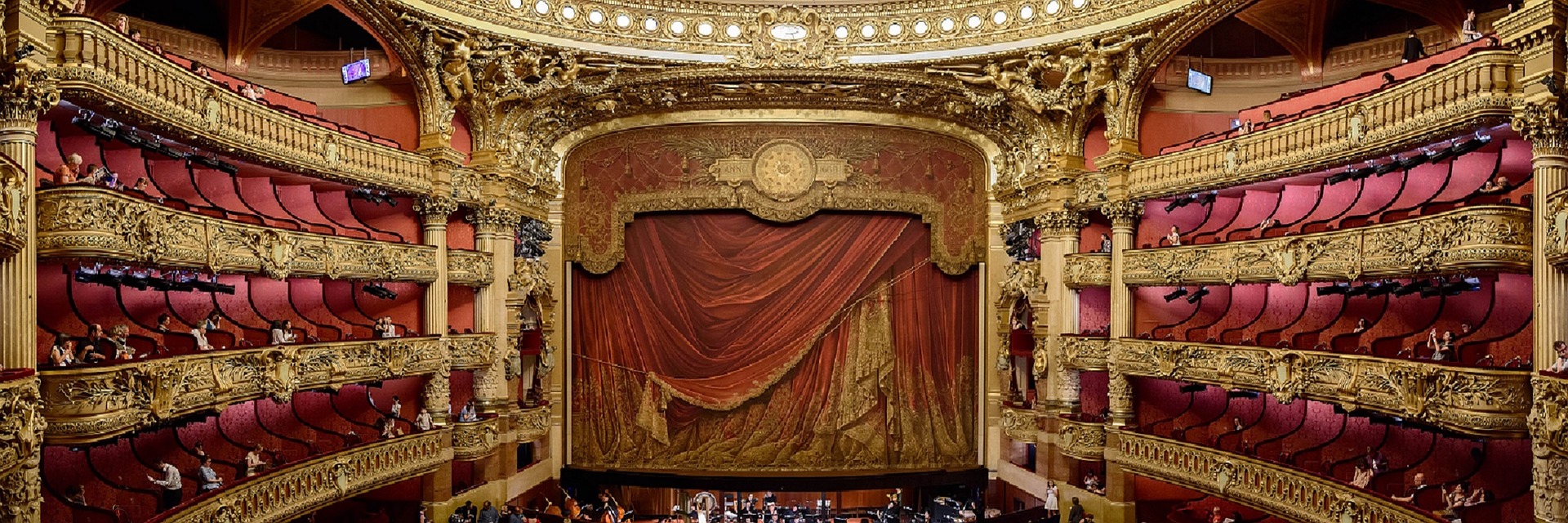
As I waited at the Gare de l'Est for the Trans European Express train to arrive at the platform, I acknowledged the appropriate name of the train station. As its name suggests, the trains that leave from the Gare de l'Est head east, and the first destination on my eastbound journey was Moscow.
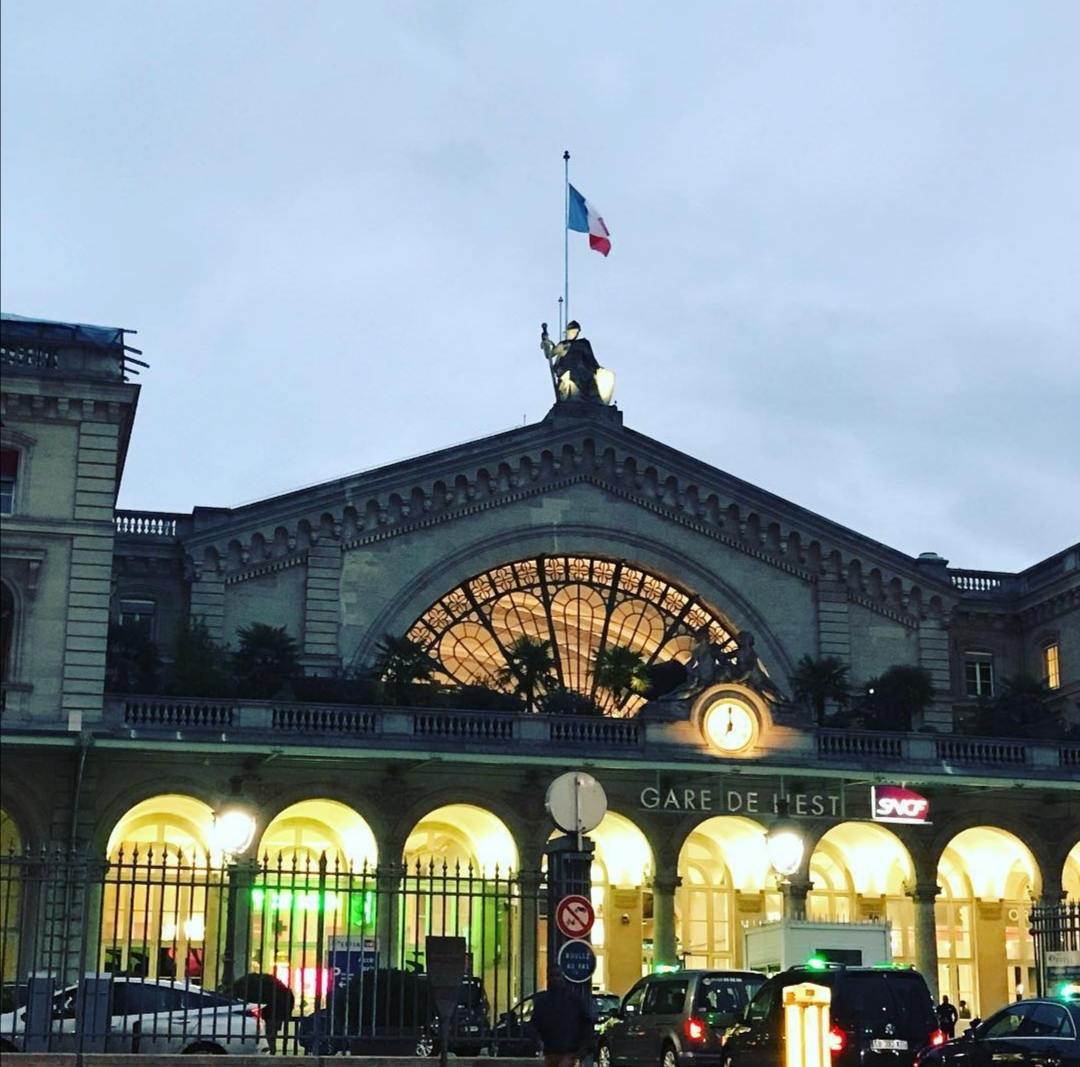
The train from Paris to Moscow operated by Russian Railways (RZD) leaves once a week and it covers a distance of more than 3.000 kilometers. Although the journey lasts a day and a half, on this well-equipped night train you won’t have to give up any comfort. The standard sleeping cars can be booked either as first class, for two passengers, or second class, for four. They all offer a comfortable bed with a table, air-conditioning, and lockable doors. However, for a luxurious feel there is a deluxe two-bed compartment with an ensuite bathroom, a TV and a private bar.
I guess I wanted to travel like a tsarina and have an experience that with the right amount of money comes with a deluxe sleeper. The first thing that caught my eye was the Paris-Moscow branded tea service on the table. I spent both nights drinking some Russian tea and imagining that the tea service was actually an imperial set made by Fabergé. I tried to picture in my mind what traveling this route might’ve looked like in the 19th century when the Russian aristocrats used to spend their winters in Paris or in the 20th century, once the White Army was defeated. There is quite a history of trains between Paris and Moscow; however, a modern and luxurious sleeper compartment would easily bring me back to present moment every time my mind wandered off.
As the train was speeding through the night I made myself comfortable in a compartment that would be my home for the next day and a half. An attendant came to my compartment to welcome me onboard and I was happy that I could practice my Russian a little bit. I knew all those years of studying Russian in school would come in handy one day, so I chose to believe that I made quite an impression. With the sofa that converts to an extra wide lower bed I found myself as snug as a bug in a rug. After taking a shower in the bathroom that was equipped with all the toiletries needed, I was warmly wrapped up in bed. When I woke up, I saw that we were in Berlin, but since it was early in the morning I just went back to sleep.
Being able to sleep in and then go to a restaurant car to eat breakfast, while greeting other passengers on the train, reminded me of staying in a hotel where you’d get to see the same guests every morning. This time though, I wasn’t sure if all the passengers were going to Moscow, but the atmosphere was quite cozy and intimate. Freshly prepared scrambled eggs and hot sausages for breakfast and coffee at the restaurant car operated by the Polish company PKP Intercity really woke me up. Breakfast comes included in the price for the passengers in deluxe compartments, and I could’ve eaten it in bed if I wanted to. However, I didn’t order breakfast to be served in the compartment as I was happy to mingle and meet some interesting people traveling on the train. For most of them Warsaw was their final destination.
At Warsaw the restaurant car was removed. Due to customs regulations, the Polish restaurant car couldn’t travel through to Moscow, which is why the Russian restaurant car was attached later on in Brest. Bear in mind that there won’t be a restaurant car available between Warsaw and Brest. If you plan on eating lunch, there is a large menu to choose from: duck or chicken breast, dumplings, chef’s dish, and a great variety of salads. You’d just have to plan an early lunch, or wait for dinner, which won’t be served before 21:00, or even later. A short stop at Warszawa Wschodnia to get the restaurant car detached was used by passengers remaining on the train to stretch their legs a little bit and walk around the platform. Back on the train, I decided to have siesta before reaching the border with Belarus.
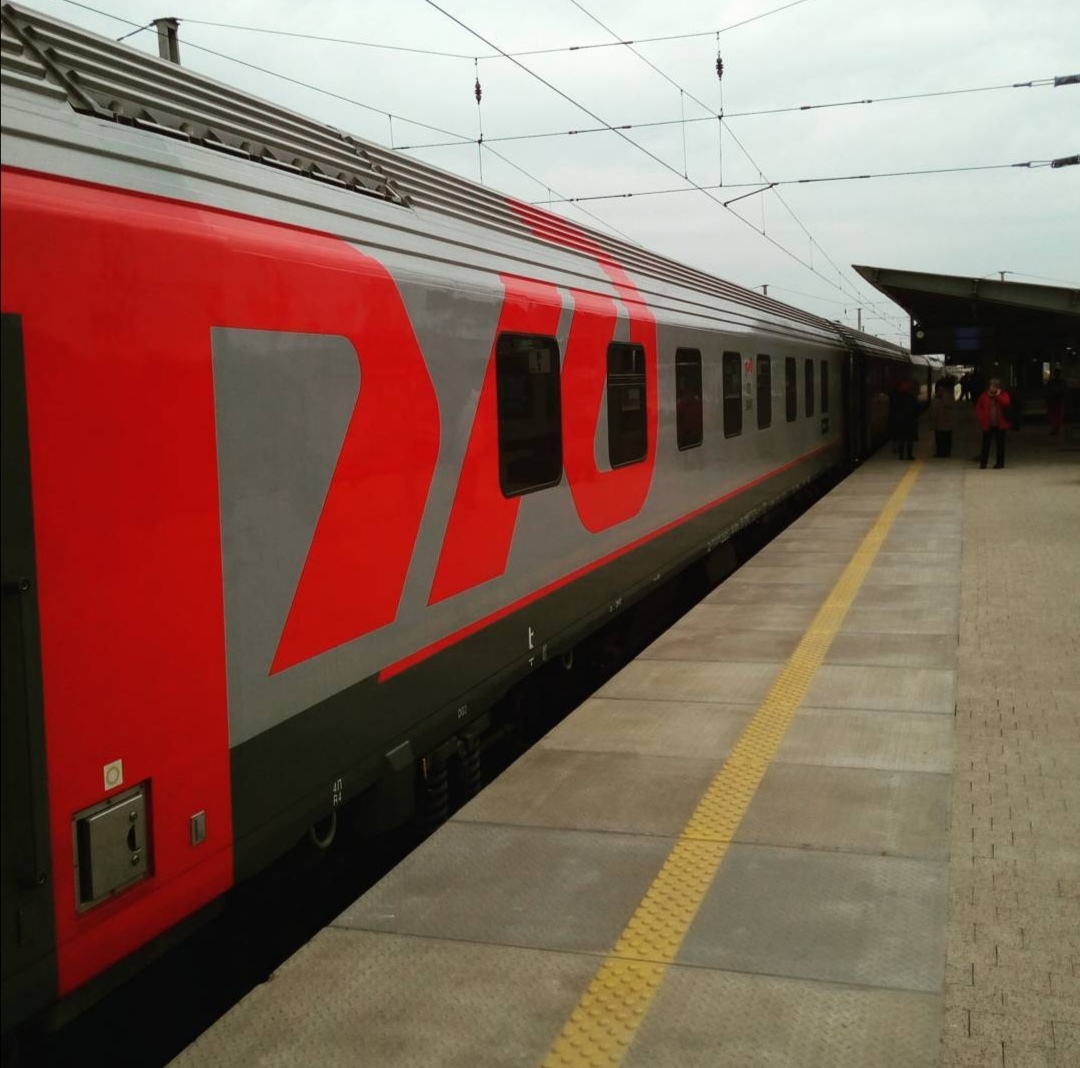
Border and custom controls are usually not much fun; however, that is not the case with crossing the Belarus border. The reason is not so much the passport check as it is the experience of seeing the track change from European standard gauge to Russian gauge. Each coach was first split and then with a cable system the standard bogies got disconnected and the coaches jacked up to position the Russian bogies under them. We all paid close look to different shunting processing taking place, with a Russian locomotive and a restaurant car being attached too. The passport control went smoothly, at least for me, because I didn’t need a visa for Belarus nor Russia. After approximately two hours, we were good to continue our journey on much broader gauge tracks.
After all the formalities at the border were done, I decided to grab a drink in a private bar before having dinner in a Russian restaurant car where all the tables had been beautifully arranged with cutlery and decorative candle lanterns. A variety of different drinks, both Russian and foreign were served, so I decided to try some Russian wine, but I wasn’t too impressed. On the other hand, a very well prepared and delicious dinner was worth waiting. The menu offered different meat and fish dishes, similar to the ones in the Polish menu. A chef needed some time to prepare everything because the food was served fresh and warm. By the time I was finished, I was so sleepy that I knew my plan to have a movie night back at the compartment wasn’t going to happen. It was my second night on the train, but at no point was I bored during this trip as there was always something going on: locomotive and restaurant car changes, different stops to use for a short walk, siesta in my comfortable bed, and drinks with other travelers on the train.
The next day when I woke up, we were already in Russia, meaning there were no checks on Belarus-Russian border. This time I had my breakfast served in the compartment. Although the landscape outside the window wasn’t really spectacular, it was still nice to eat breakfast in bed and occasionally see some villages the train passed on our way to Moscow. Before I started packing, I took one last long shower in my deluxe sleeper. I was ready to get off at the Belorussky train station looking my best.
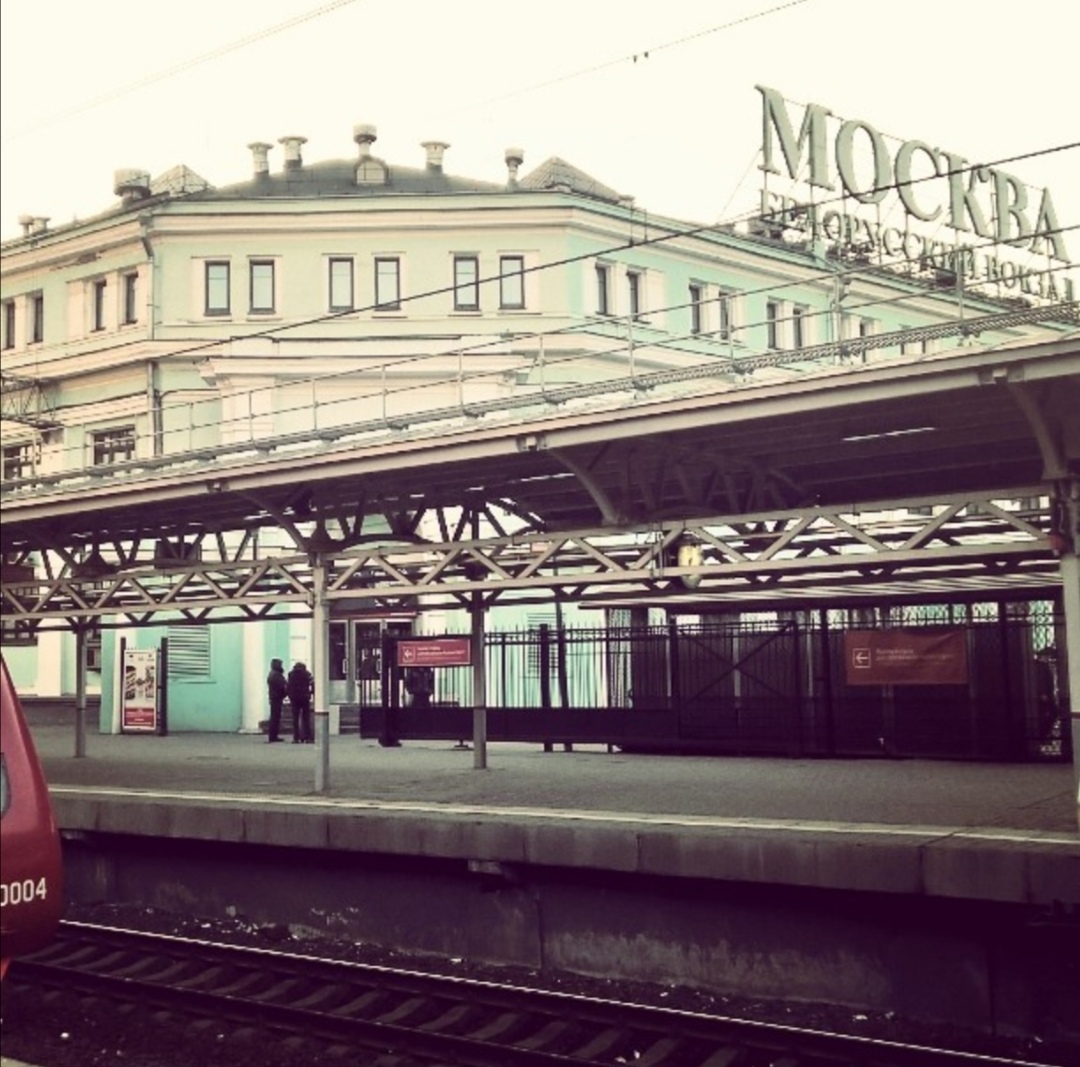
Russia’s capital is considered nowadays to be one of the leading political, economic, cultural and scientific centers both in Russia and on the European continent. With various world-famous sites and attractions that you can find, Moscow has plenty to offer and keep its visitors entertained for months. According to Forbes, Moscow is in the top 3 cities with the largest number of billionaires. Although I’m sure they don’t find living in the Russian capital to be that costly, do know that staying in Moscow comes with a price as it is one of the most expensive cities in the world. So, plan your budget well because this city requires time and at least several days to visit all the must-see places.
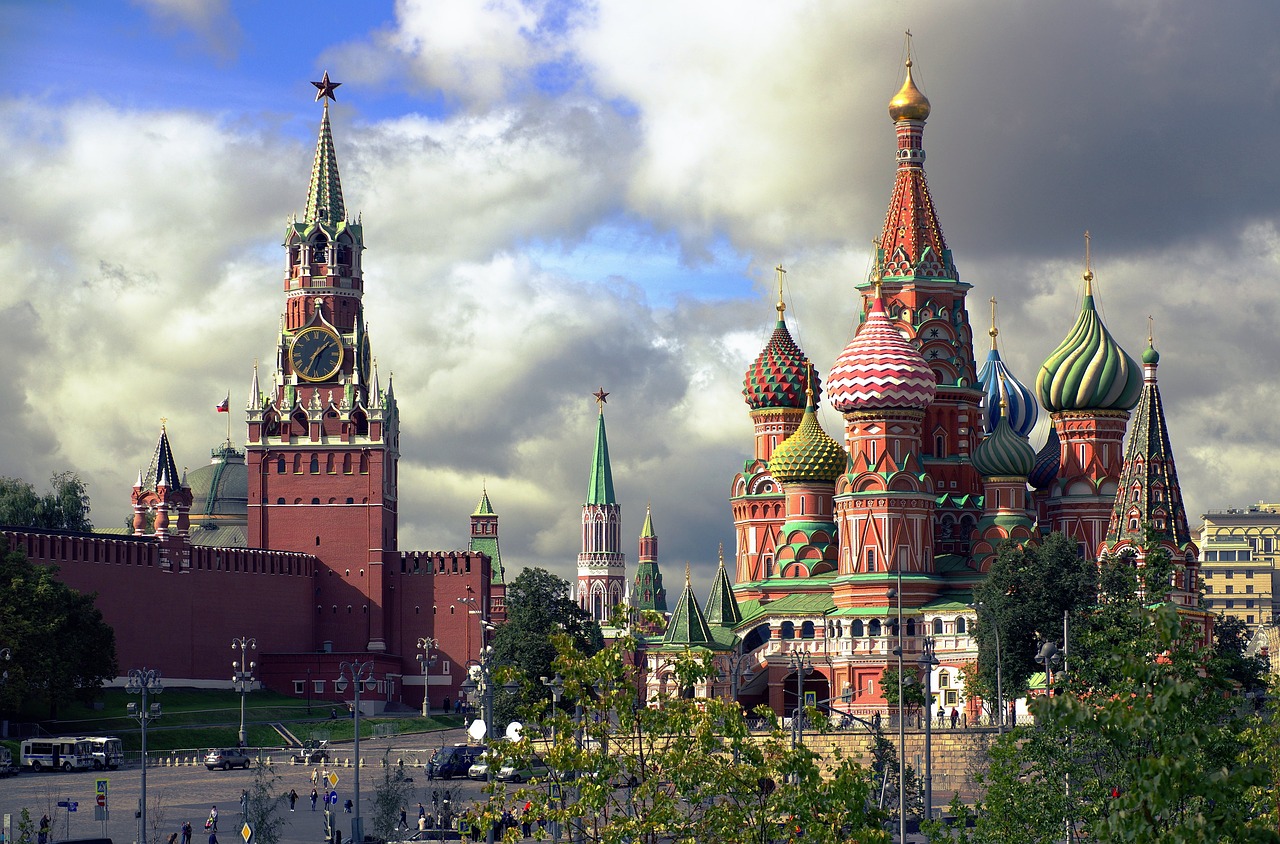
Writing about all the attractions in Moscow would require another chapter in this travelogue, so I decided to single out my favorites. If you are an art lover, the Pushkin Museum of Fine Arts needs to be on your list. This museum was a dream of Ivan Tsvetaev, a professor at the University of Moscow and a father of Marina Tsvetaeva, a famous Russian poet of the 20th century. The museum was opened in 1912, on May 31st to celebrate the 100th anniversary of Napoleon’s defeat. This fact was easy to remember, and it filled me with cheer because I realized that such a wonderful museum was opened on the same day as my birthday. The museum was built in a form of an antique temple and with columns resembling the Erechteion on the Acropolis. Another centenary anniversary important for this museum was that of Alexander Pushkin’s death. In 1937 the museum was named after the great Russian poet whose name it bears today.
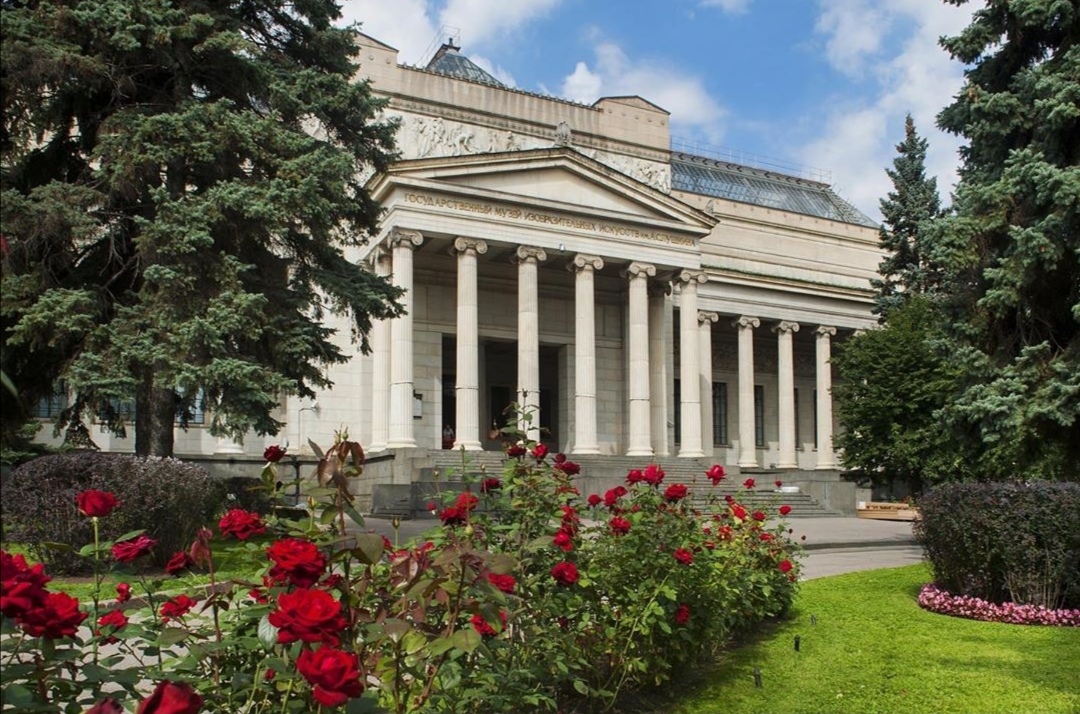
The Pushkin Museum is home to the largest Russian collection of foreign art from ancient Egypt, Greece and Rome to modern European art. Many come to see the ‘Treasures of Troy’ exhibit with items excavated by the German archaeologist Heinrich Schliemann. Schliemann donated his collection to the city of Berlin from where it was brought to Moscow at the end of WWII. For me, the best part of the museum was the Gallery of 19th and 20th Century European art with the paintings of French impressionists and post-impressionists.
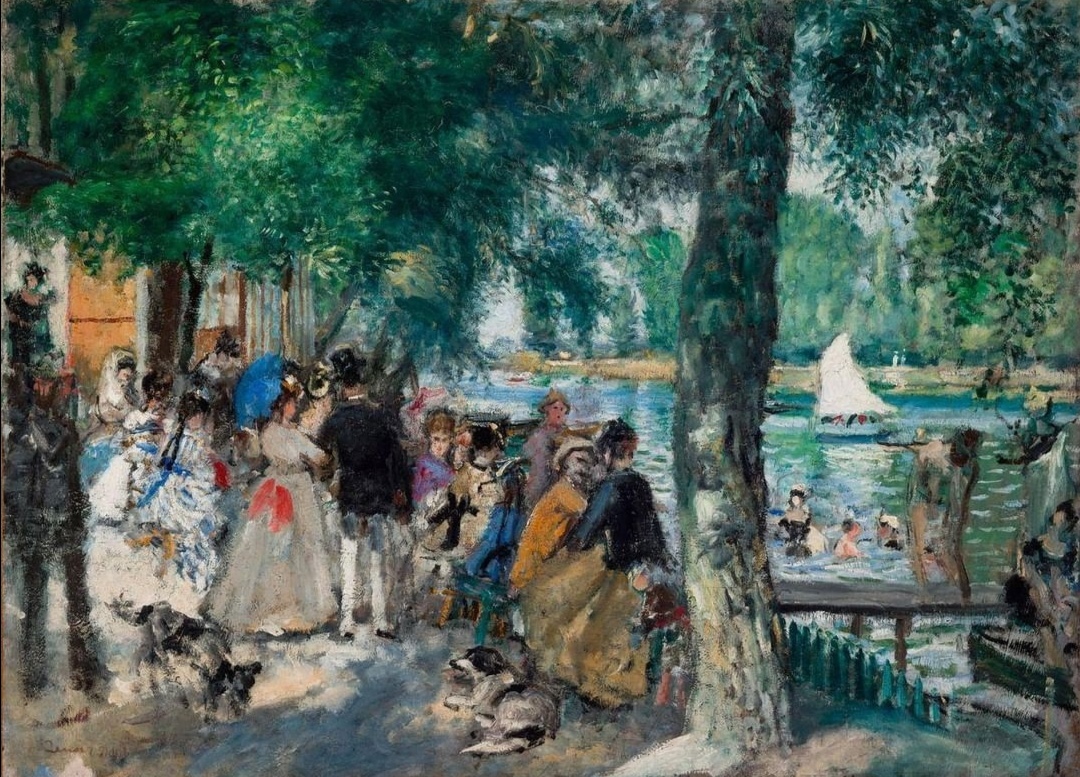
The works of Monet, Renoir, Pissarro, Degas, Gauguin, Van Gogh, Picasso, and Matisse made the museum famous worldwide. Among these works are ‘Acrobat on a Ball’ by Picasso, ‘Porrait of Jeanne Samary’ by Renoir, ‘Goldfish’ by Matisse, ‘Red Vineyards’ by Van Gogh, and many, many more. The museum comprises several buildings, so you can check where the artwork of a specific period you’re interested in is located. The museum often holds temporary exhibitions, and it is not rare to have the most famous world art displayed; ‘Mona Lisa’ by Leonardo da Vinci was also a special “guest” once.
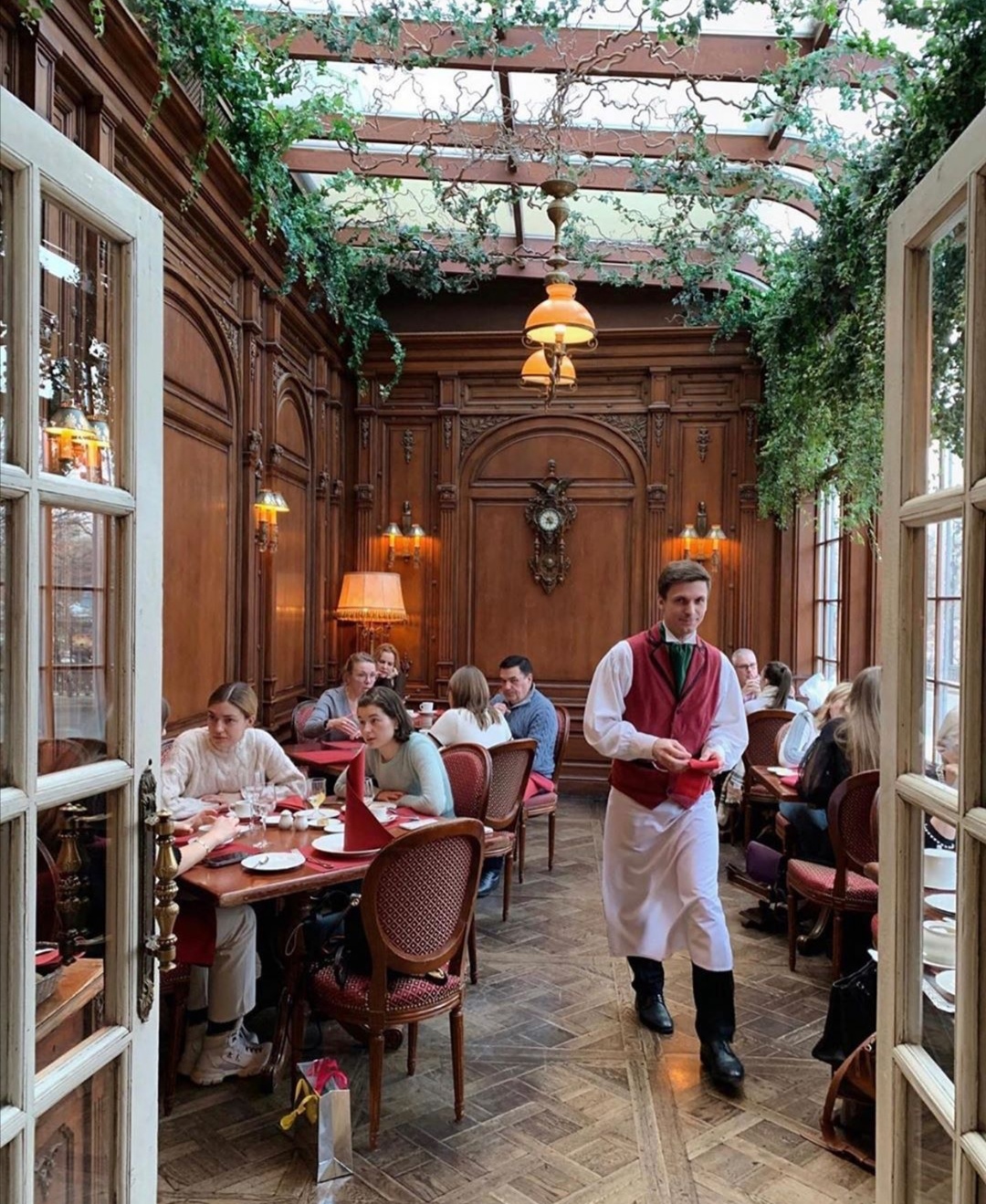
Another place worth mentioning is Café Pushkin. I found the story about this restaurant interesting and in a way connected to my Paris-Moscow journey. Café Pushkin was first mentioned in a song by French chansonnier Gilbert Bécaud. What the French visitors coming to Moscow looking for Café Pushkin didn’t know was that this place existed only in Bécaud’s song. Some 50 years later, Andrey Dellos, an artist with Franco-Russian roots, decided to open a restaurant named Café Pushkin and have Gilbert Bécaud perform his famous song “Natalie” at the opening in 1999. The restaurant offers a blend of Russian and French cuisines, combining historic recipes with a modern touch.
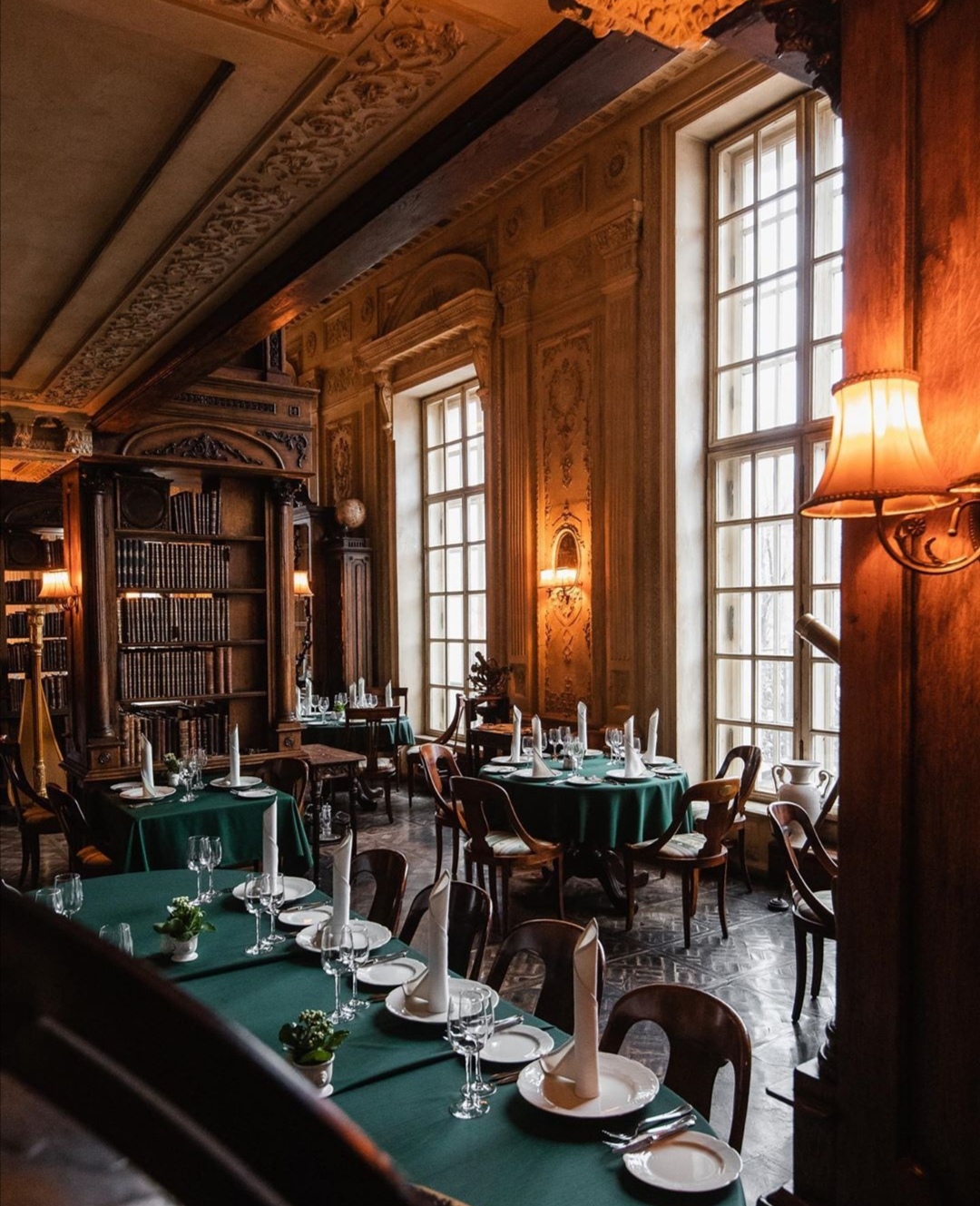
Named after the Russian poet, Café Pushkin is located on Tverskoy Boulevard where he was often seen scrolling. The baroque mansion was built in the 18th century and in today’s restaurant I’d say that the two most impressive dining rooms are baroque-style halls with beautiful antiques and a library with bookcases rising to ceiling. There is also the Pharmacy hall, since in the 19th century there was a pharmacy opened on the ground floor, and the Fireplace hall with an ornate ceiling depicting Nike, the winged goddess of victory. There are many details you’ll find fascinating and the décor creates a feeling of a different, more distant time. The food was also delicious, and prices vary depending on the meal you choose, but do know that one of the meals the restaurant is known for are pancakes with caviar. For those with a sweet tooth, there is a wide selection of desserts that are worth taking a look at. Deciding on the one to try though might be a difficult task.
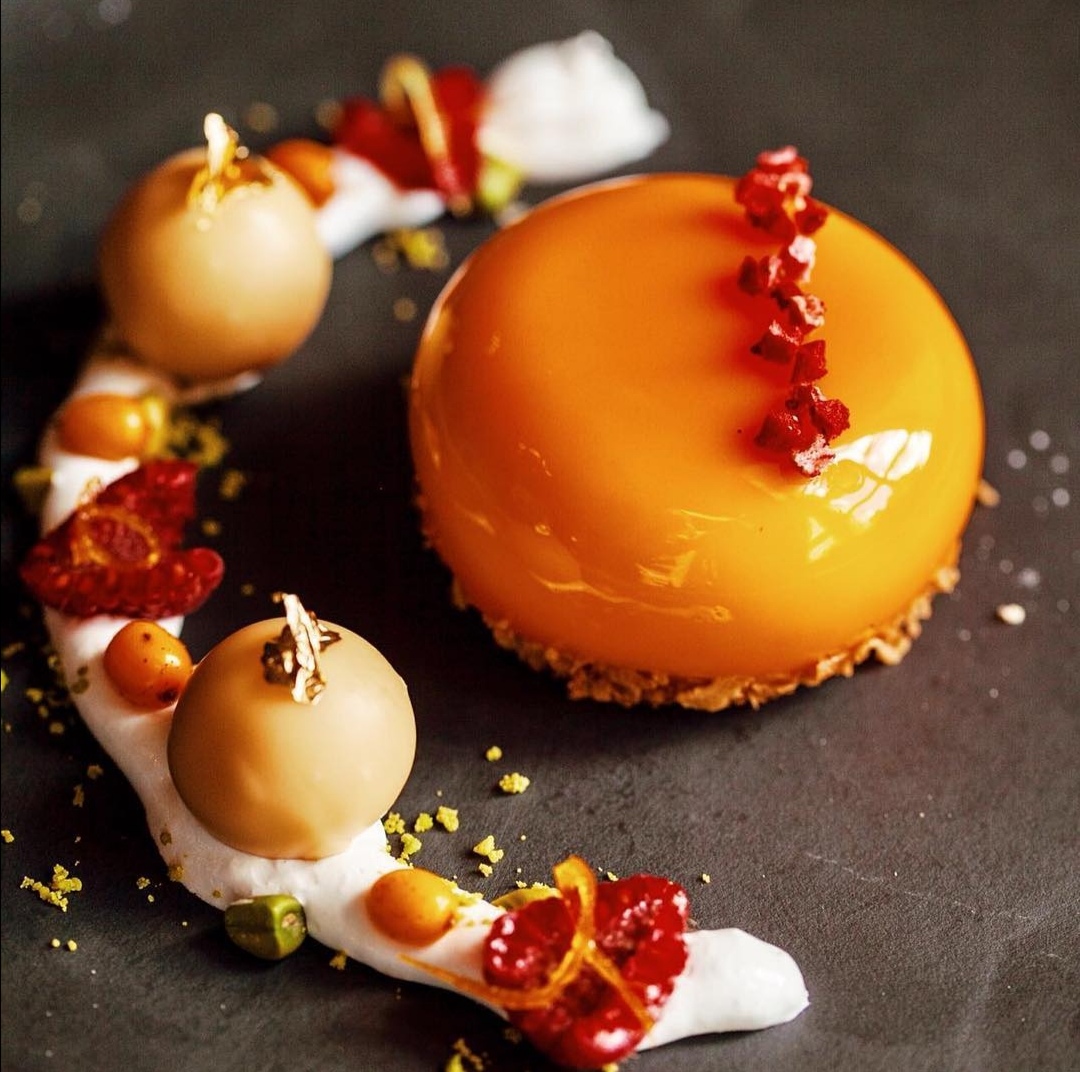
Before leaving for Moscow, I had tickets purchased for a ballet performance at the Bolshoi Theatre. After Paris, I knew I wanted to see the theatre that had been rebuilt so many times and “lived” through different regimes. Finding out about the theatre history is much more interesting if you book a tour. There are 4 stages and if you’re lucky, you might get a sneak peak of a rehearsal taking place on one of them. If you come in the evening, you might want to dress up a little bit; however, there won’t be a tsar in the audience to impress with your style, so don’t overdress.
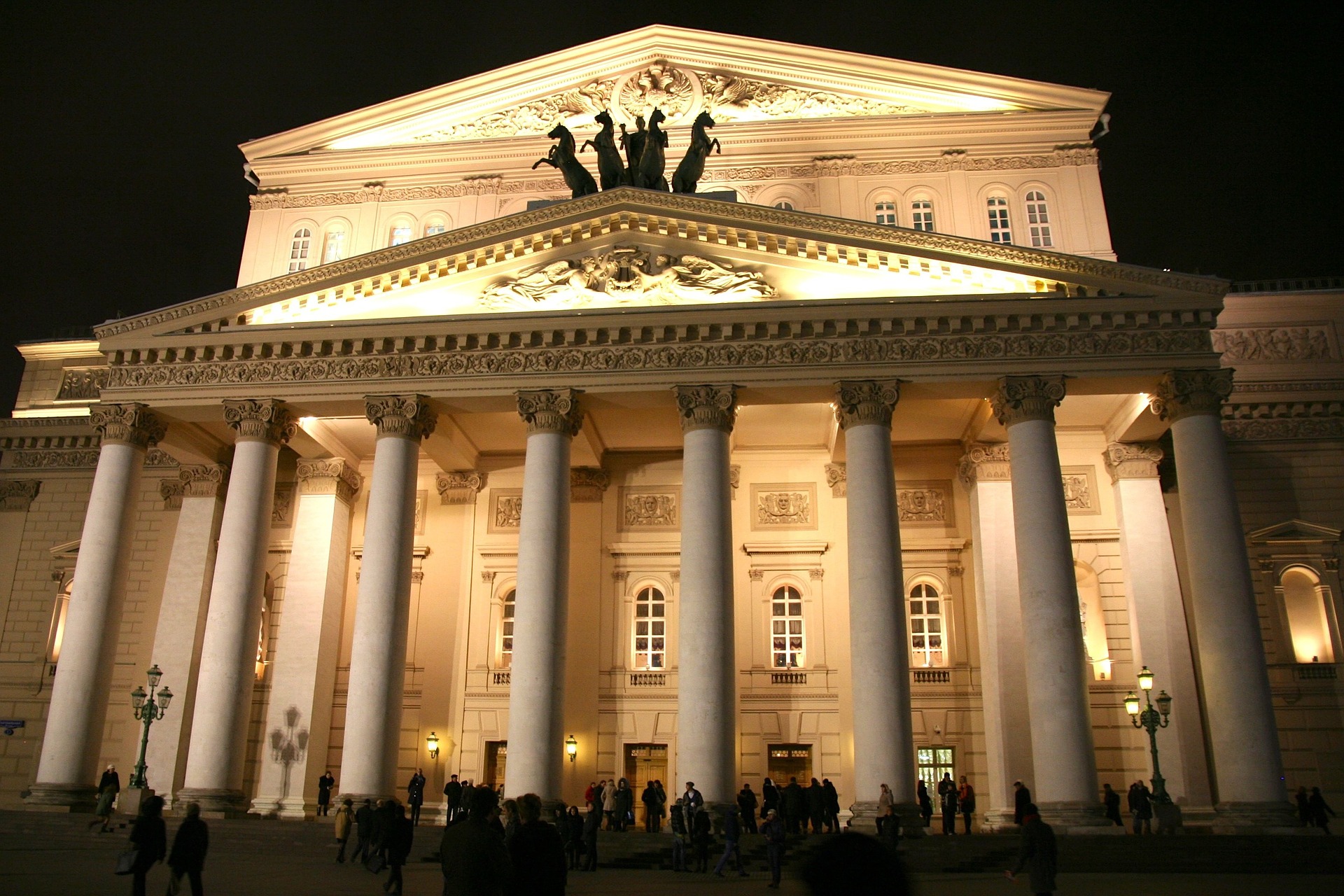
The excitement of people rushing towards the entrance really built up my expectations. Their excitement was contagious, and I was about to discover it was for good reason. On one side it was the atmosphere and appreciative audience, and on the other a stunning performance, artists and music that made my night really wonderful. To perform on the stage of Bolshoi Theatre is a dream for many artists who start preparing for their calling from an early age. The grace of dancers and the mastery of musicians that come together in a superb performance cannot be described solely with words. Even if you don’t fancy ballet that much, I’m sure you’ll enjoy at least some parts; if not, the champagne you can get during an intermission is quite nice too.
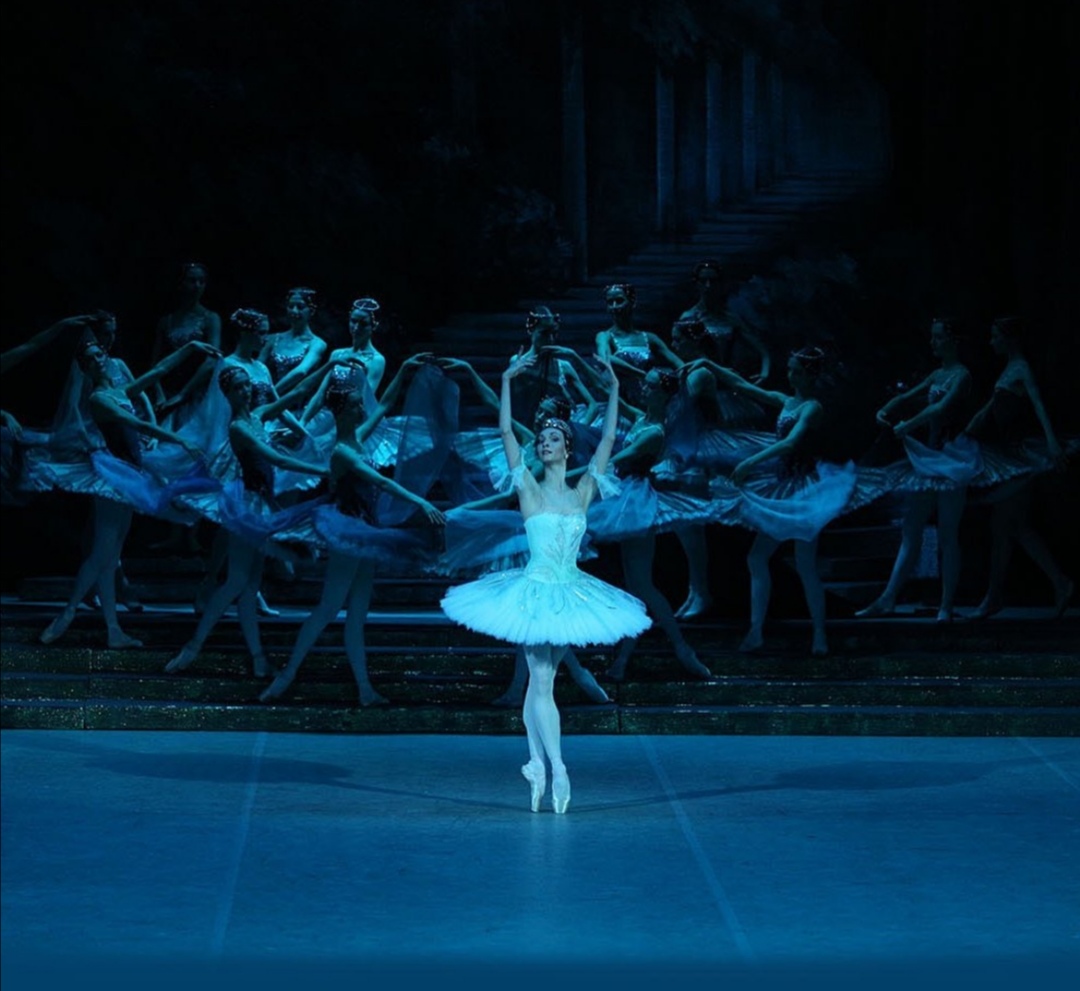
Deciding on the route that I’d travel from Moscow was a tough choice because I had to consider different factors when planning such a long trip. Although I would have loved to visit Tashkent in Uzbekistan, being there and not going to Samarkand, Bokhara and Khiva, which would’ve required time to properly see all the sites I had on my wishlist, made me consider leaving Uzbekistan for another silk route travel. Therefore, I decided to go directly to Almaty in Kazakhstan. However, since there is no longer a direct train from Moscow to Almaty and traveling is possible with a change at Saratov or via Astana, I decided to see the Kazakhstan’s capital first. Also, I decided to break down the journey that would’ve lasted 4 days and take an overnight train to Samara first.
There are several trains departing from Moscow's Kazanskiy railway station to Samara every day. I chose to spend a night on an overnight firmeny train going to Southern Ural. Firmeny high-quality trains in Russia, described as firm, offer more luxurious and modern sleeper compartments.
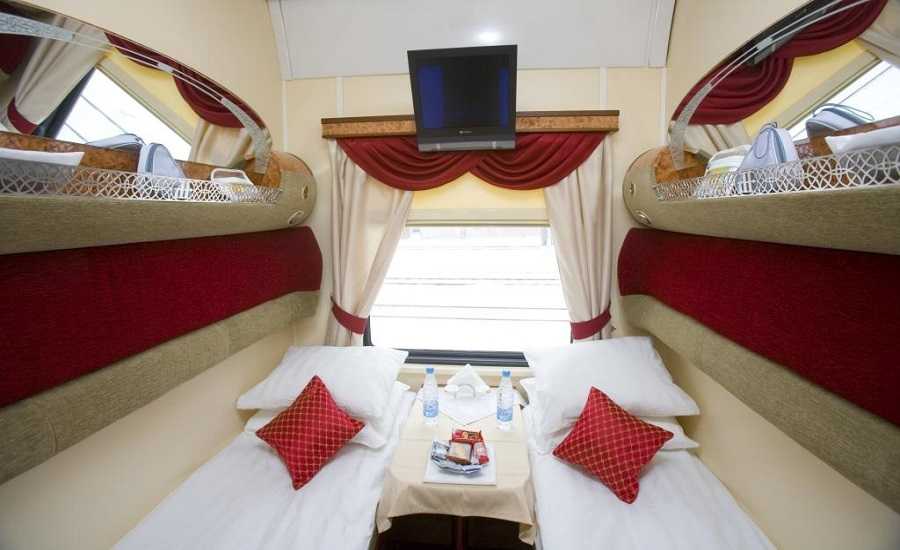
Compared to other trains operated by Russian railways that have only second-class 4 berth compartments and third-class open sleeping berths called “platzcart”, most firmeny trains offer first-class 2 berth compartments as well.
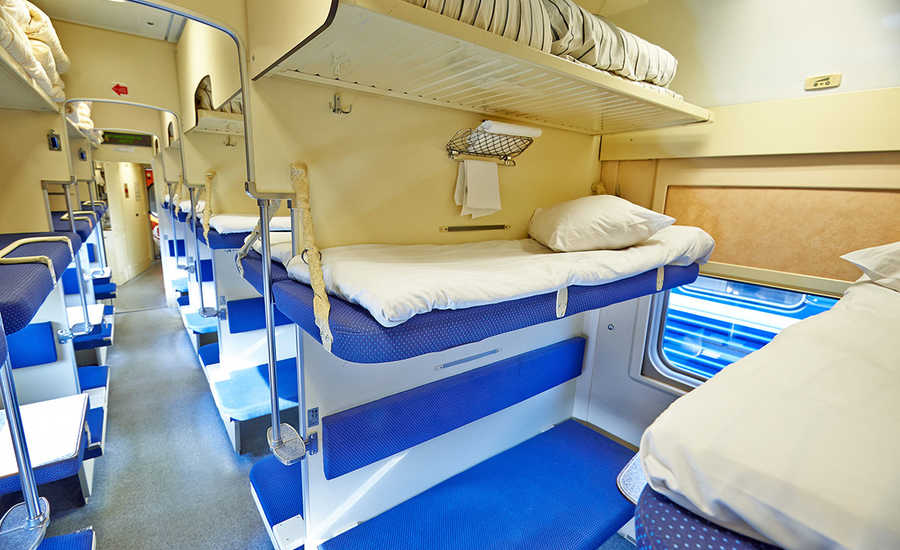
Although I was told that I should’ve experienced traveling the “platzkart” style, I knew that sleeping in open berths would’ve been an option only if I were much younger, just like youths traveling in groups that I saw boarding the train. Instead, I had a first-class compartment for myself to rest on a 14-hour ride to Samara.
In a first-class compartment there are two beds with mirrors above them, a TV, and a folding table with bottled water, snacks and teacups that mean only one - more Russian tea. Bed linen is included, and a pair of slippers, towels and a travel-kit with toiletries provided. You can include meals when buying a ticket and have them served to you in a restaurant car or your compartment. The service on board was really good and different snacks and drinks could be purchased from a train conductor (“provodnik” in Russian). Toilets are on both sides of the carriage with running water and equipped with napkins and toilet paper. Some firmeny trains offer deluxe sleepers with a private toilet and a shower, but they weren’t available on this route. After several announcements in Russian, the train gradually drifted off to sleep. It seemed that intense day(s) in Moscow wore us all out, so as I was locking my compartment for the night, I didn’t dare to ask “mirror, mirror, on the wall, who’s the fairest of us all”.
I arrived around noon in Samara, after a good night’s sleep and nice breakfast in the morning. After Moscow, my stay in Samara was quite relaxed, which was nice for a change. Compared to Russian capital, Samara didn’t seem as a city that had that many attractions to offer. Nevertheless, its position on the Volga river made it an important stop on the Silk Route between Europe and Asia, and I thought this might be the only time I would actually get to visit this city. Discoveries from a Golden Horde city Ukek, founded by the descendants of Genghis Khan and located further south, provided archaeologists with the idea of what a life looked like along the Volga river. In the summer, there are also river cruises that can take you as far south as Astrakhan.
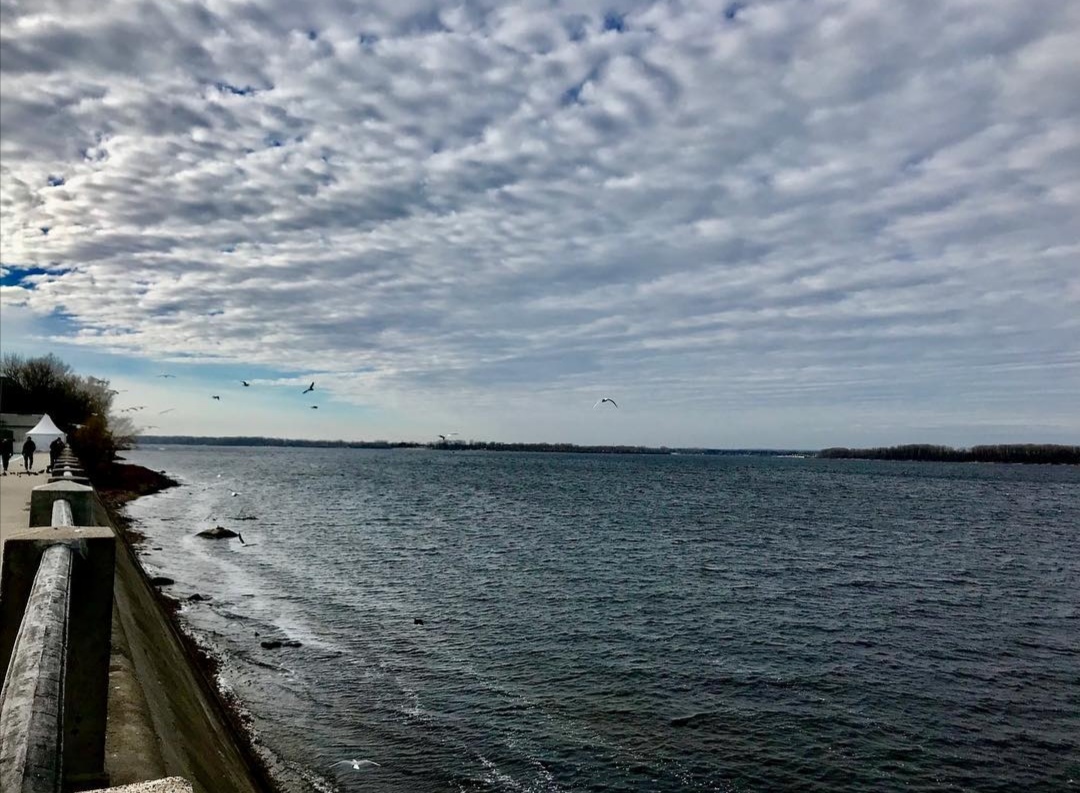
I stayed only one day in Samara, so I spent the whole day walking around the city, looking at quite unusual and diverse architecture. On one side, you’ll notice the wooden houses with carved folk patterns and pagan symbols that tell about the roots of the Volga people. On the other, you’ll see quite expressive mansions in art-nouveau style and residential blocks constructed in the classic Soviet style. The biggest attraction in Samara is the beach and the Volga waterfront from where you can enjoy the view while sitting in one of the cafes. There are lots of restaurants offering Russian and Georgian food and wine, coffee shops and teahouses. For the best panoramic view of the Zhiguli Gates, the place where the Volga river flows between two mountains, check the Observation point. Both tourists and the locals come here to soak in the scenery, have a picnic, coffee break, or just to take some pictures.
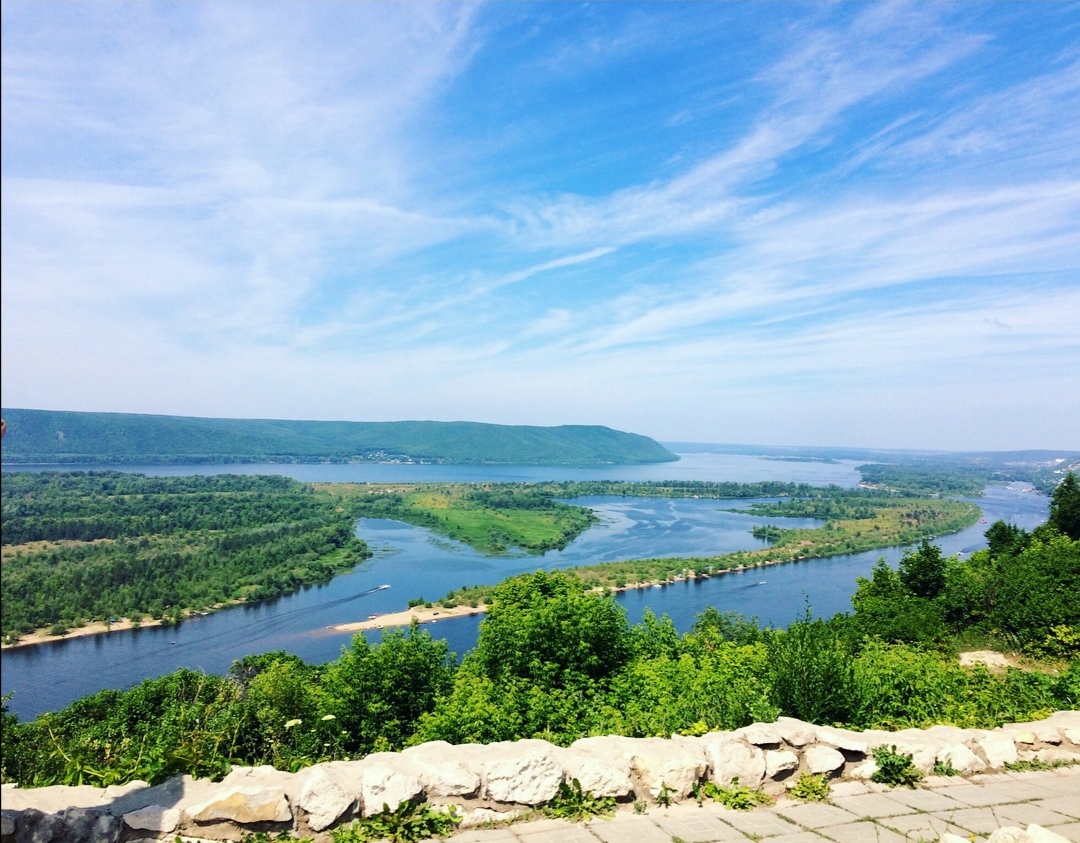
The following day I was at Samara railway station again, ready to catch a train to Astana. The train to Astana leaves Moscow on even dates and it offers only second-class compartments with 4 berths and third-class platskartny cars with open berths. For a journey that was going to take around 36 hours, I was looking for some extra space and privacy, so I booked an entire 4 berth compartment. Still, these compartments are rather small and having four people in it would make it quite cramped. Luggage can be stored either under the lower beds or in the space provided above the TV. There’s a mattress on each bed with a pillow and a blanket provided, and you’ll be given the linen and a towel after boarding the train.
The compartment was a bit outdated, and even less comfortable than a second-class compartment on a firmeny train. Of a deluxe sleeper, I could only dream of. Before going to bed, I spent some time reading, but I found snoring from a compartment next to mine quite loud and disturbing. Luckily, I had my ear plugs with me, so consider taking those with you as they won’t be provided. As far as the compartment goes, every bed is equipped with its own reading light, there are three sockets, the door with two locks, space to hang clothes that you don’t want to get wrinkled, and a mirror on the door.
These trains, although old and outdated, are still widely used by Russians and Kazakhs. For me, this trip was all about the well-worn ancient merchant path that got me off the tourist trail more traveled by westerners. After the Volga region, the train takes you through the Southern Urals and into central Siberia, before crossing the border with Kazakhstan in the evening. Although I saw some of the most remote Russian landscapes, I was glad that I decided not to take a train directly from Moscow to Astana. A day and a half spent on the train from Samara was more than enough for several reasons. First, toilets were either out of order or made you wish you never needed one. Second, a restaurant car that was supposed to be on the train simply didn’t exist, so snacks could be purchased at a kiosk on some stops along the way. And third, although I can’t say it bothered me that much, the TV didn’t work. Given the whole experience, I guess I’d say that with this trip – you win some, you lose some.
Before reaching the Russian – Kazakh border, I was given the immigration papers for Kazakhstan to fill out. I’m sure that my preparing for the journey along the Silk Road was a lot easier because I didn’t need a visa for any of the counties visited; otherwise, the whole planning would’ve taken longer. I had my passport checked on both sides of the border and some basic questions asked about the reasons for my trip. Kazakh police wished me a good journey and said I’d have plenty to write about in their country. Once in Kazakhstan, there was a lot of commotion in the corridor as many passengers had gotten on the train. I was listening to them speaking the Kazak language which was new to me and sounded a little bit like Turkish. It was my second night on the train and a first one in Kazakhstan.
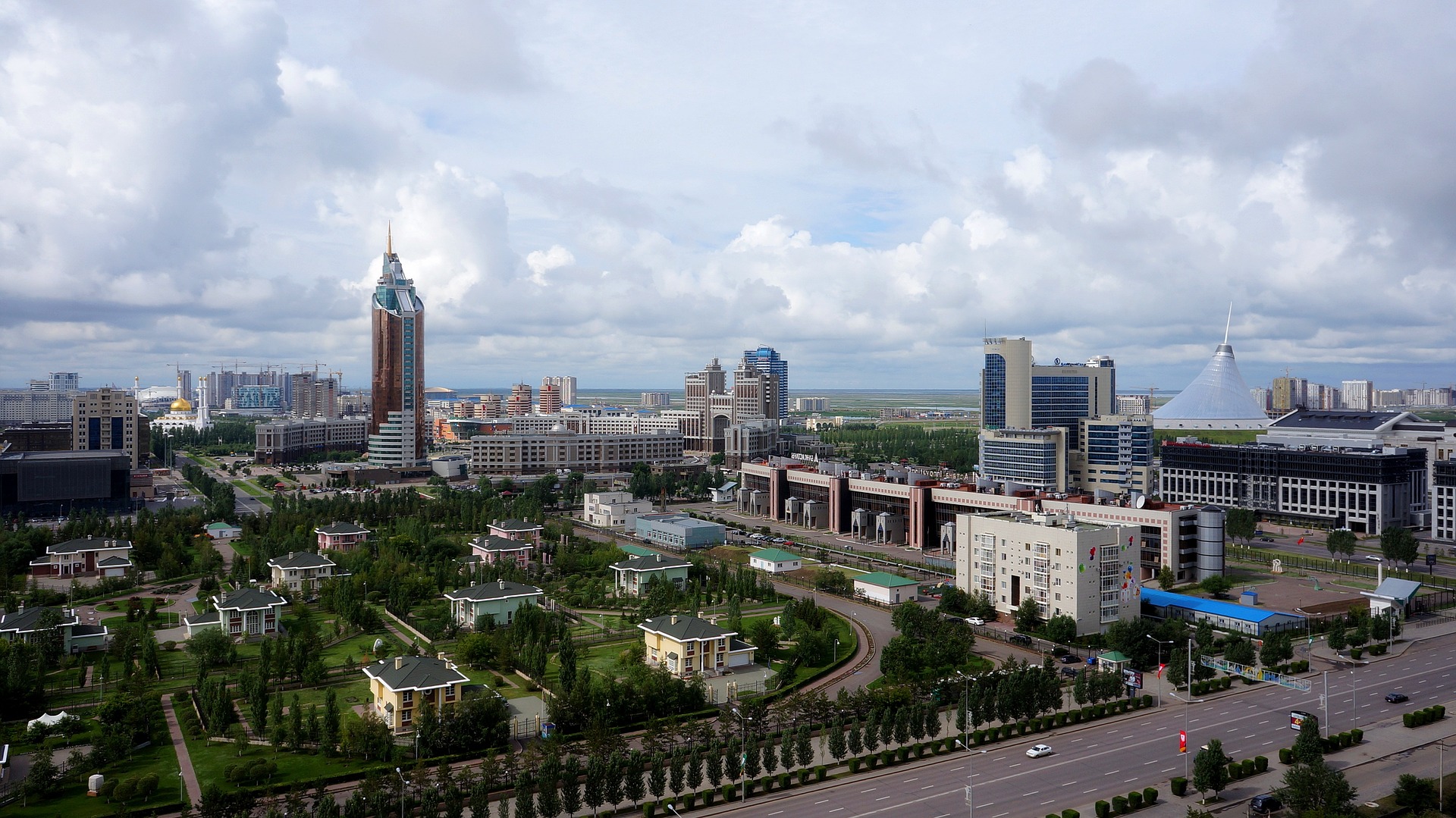
The next morning, I was in Astana, recently named Nur-sultan after Kazakhstan’s former president. In 1997 Nursultan Nazarbayev decided to make Astana the new capital of Kazakhstan. As a result, the capital was built from zero in the empty and vast Kazakh steppe. I had seen photos of Astana’s futuristic skyline but seeing some of the buildings in person felt completely different. Most of the time I just felt awestruck by their size which is why my impression was that this city was huge, although considered its population of nearly a million people, it’s not that big of a city for a capital. There are several monuments and buildings you’ll find hard to miss or not see while walking around the city.
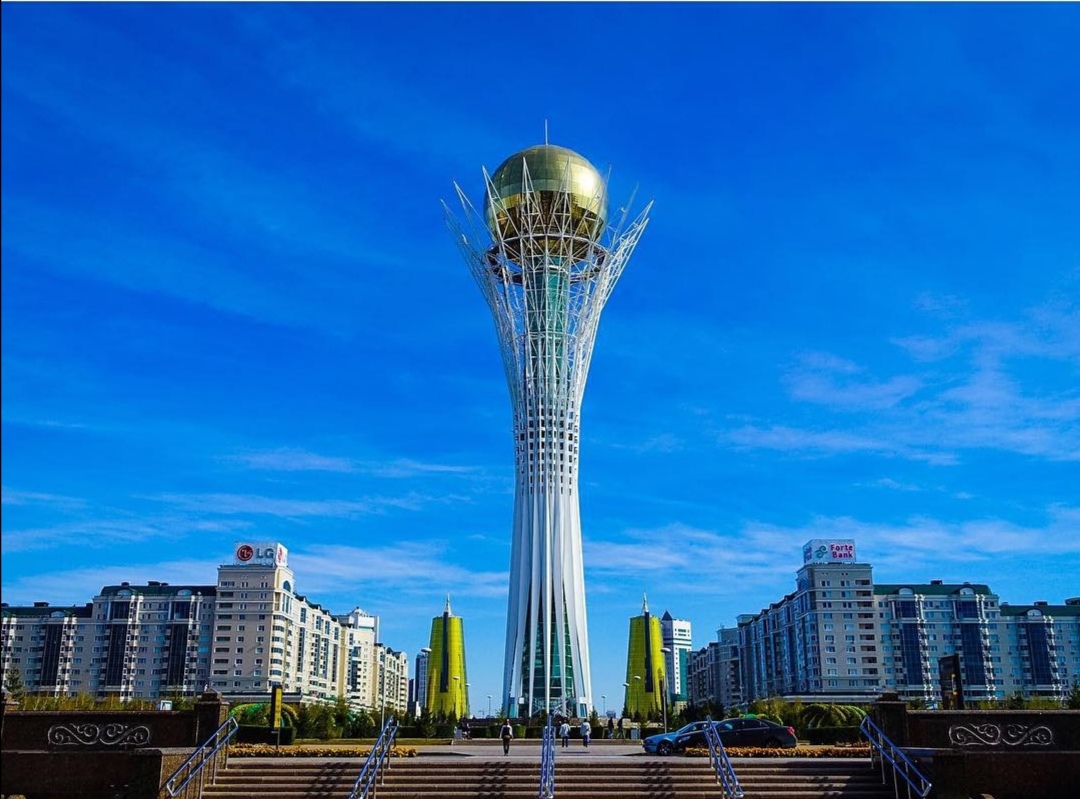
The first one would be a 97m high Bayterek Tower with a big golden orb on the top. The tower is said to embody a Kazakh legend of the mythical bird that lays a golden egg containing a secret to happy life on the top of a poplar tree. I saw people taking the lift to go inside the egg, whether to pursue the happiness promised or just the views from the top I wasn’t sure, but I decided to look for joy elsewhere. I had arranged a traditional Kazakh food tour, which included having a meal with a local family. My tour guide Aylin was with me and I was quite excited to learn more about Kazakh national cuisine that stemmed from the nomad traditions.
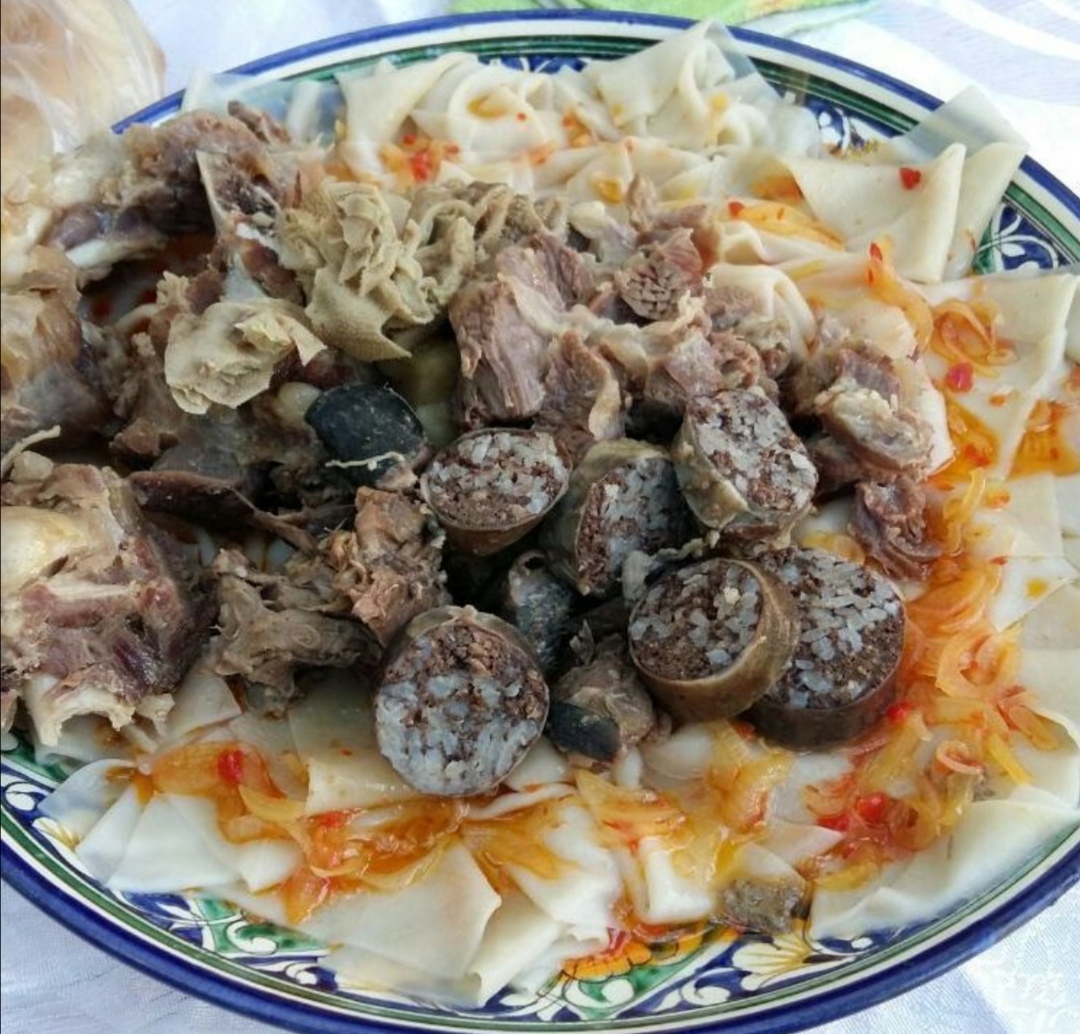
To survive the Kazakh winters nomads needed high-fat nutritious meat meals that could be prepared on the move and that would provide enough energy. Therefore, it comes as no surprise that the most popular dish to this day is ‘besbarmak’ prepared with several types of meat - horse meat, beef, lamb, and camel meat. Its translation means ‘five fingers’ and given the fact that you eat it with hands, it makes perfect sense. I was also served ‘kumys’ (horse milk) and some sweets, but what I enjoyed the most were the stories about the rituals that had special meaning. Even today, when families gather to dine together, food is passed from the elderly to the children first, and then to close and far relatives. Also, there is a meaning in who gets which piece of meat, so some get the brain to become ‘smarter’, others get ears to be ‘more careful’, and if you’re a woman, your status (single or married) will be taken into consideration before placing the food on your plate.
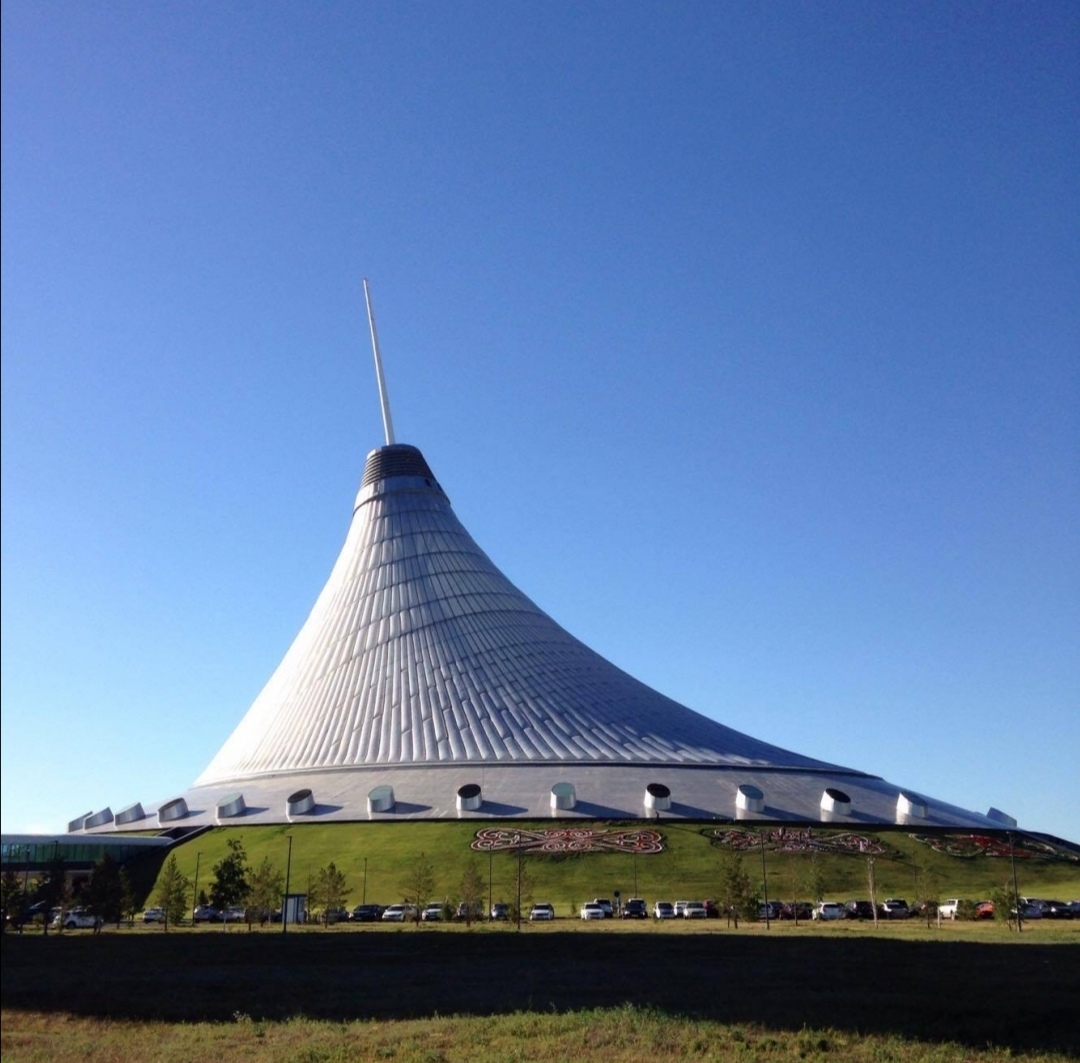
Apart from the food that was really different from anything I’d ever tried, I got to hear about Astana and how it came to be the way we see it today. Back in the center of the city, I had a more ‘local’ view of the monuments that made Astana and its architecture unique. One of the examples is the world’s largest transparent tent called Khan Shatyr that ensures warm comfortable temperatures throughout the year. That explained a beach club with sand and palm trees among other things (a shopping mall and a theme park) this enormous tent is a home to.
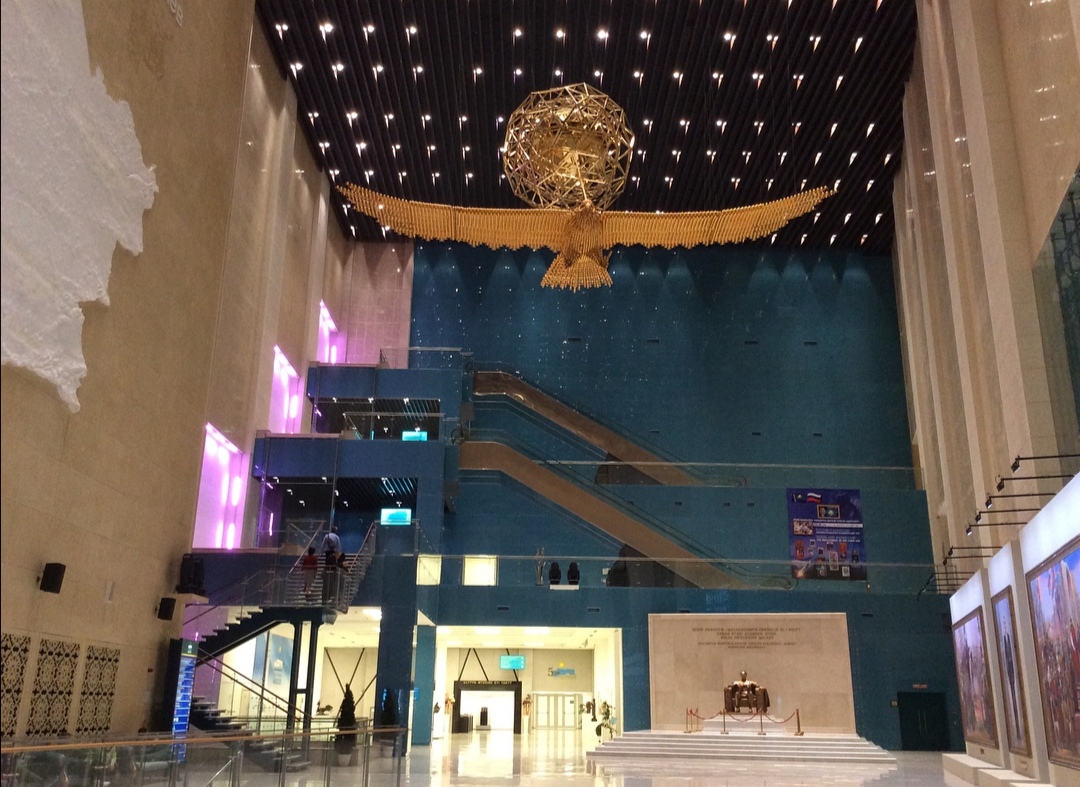
Other attractions that are worth mentioning are the Hazrat Sultan Mosque, the second largest in Central Asia and the National Museum of Kazakhstan. I believe this was the ‘youngest’ museum I’ve ever been to, but its collections and artifacts kept me there for hours.
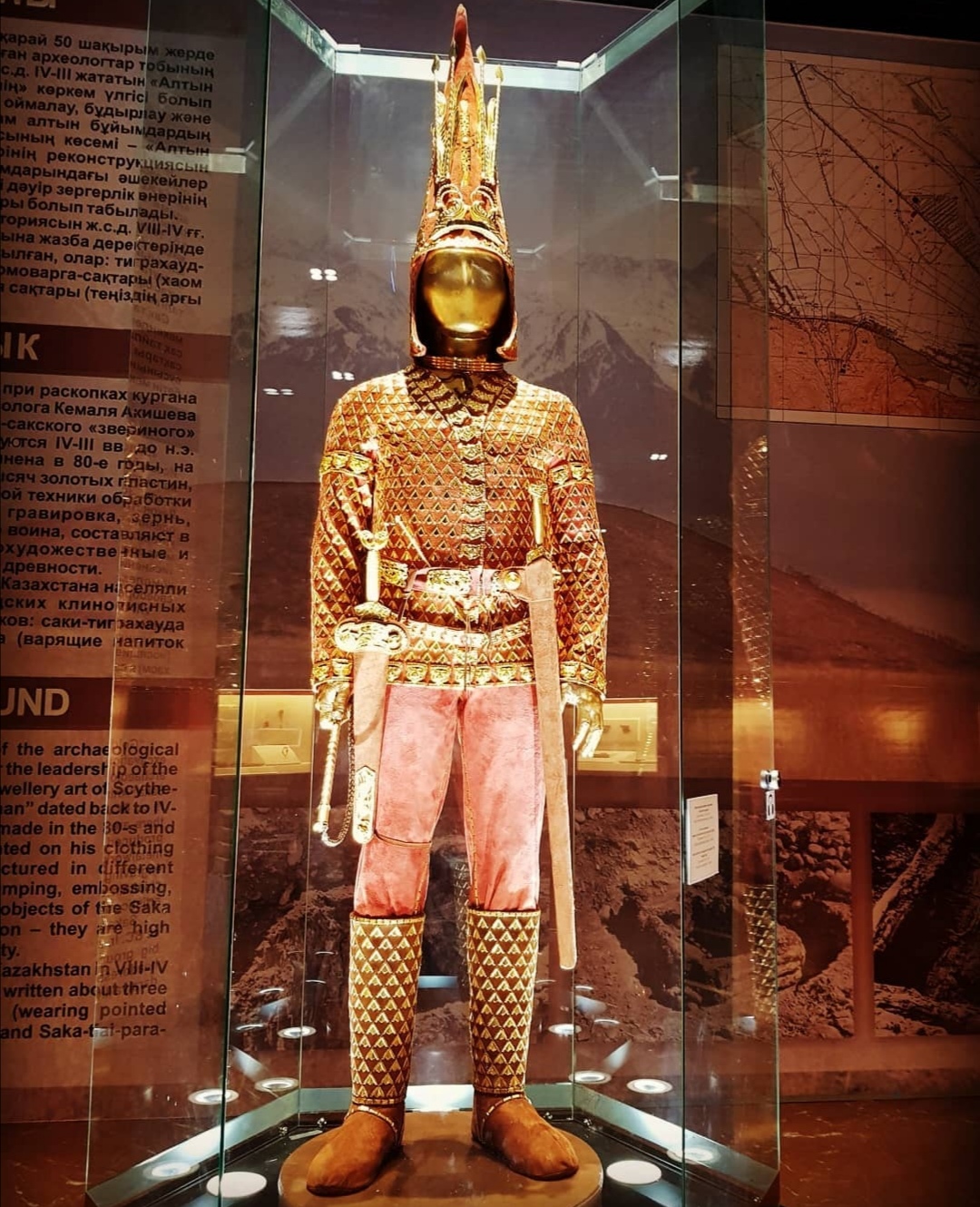
The Golden hall required a separate ticket, but I was curious to see a replica of the Golden Man who was discovered in 1969 during excavations on the banks of the Issyk river. The grave of a young man dressed in armor all covered with gold revealed a lot about the ancestors of the steppe civilization. Immersed in all its displays, I learned a lot about history and culture of Kazakhstan, from ancient to modern times. I felt ready and equipped with knowledge to continue my journey onto Almaty.
After 2 days in Astana, I was taking a Tuplar-Talgo sleeper train (also called Spanish train) operated by the Kazakhstan Railways (KTZ) to Almaty, the former capital of Kazakhstan. When booking a ticket make sure you have the right station checked as there are two stations both in Astana and Almaty, an old one in the center and a new one outside of the center. After having my bags scanned, I headed straight to the platform indicated on the departure board. My knowledge of Russian was helpful on numerous occasions; navigating around the train stations was one of them. A conductor who welcomed me onboard checked my ticket and took me to my first-class luxe 2-berth compartment. The seats were in day mode, but a conductor quickly had them converted into sleep mode.
Although called luxe, a sleeper compartment was very narrow, and a toilet and a shower stall had such a limited space that I wondered if I was going to fit inside. The bed came with sheets, a blanket and a pillow but neither the pillow or the bed were comfortable, and I had hard time falling asleep. For some reason, I had a feeling of having spent the night in some sort of a plastic box. On the bright side, keycards to lock the door were provided and the private bathroom still offered more privacy than second-class 4-berth compartments.
However, what made this ride on a Talgo train special was the bar. Separated from a restaurant car where you can order food from quite an extensive menu, the bar seemed to be the place where most passengers decided to kill their time. I met some locals and a couple from Spain who were there as tourists, just like myself. In a conversation that was a mix of English, Spanish and Russian, we had several rounds of beer. It felt like a night out, and we all forgot that we were on a train. The couple from Spain kept ordering snacks from the menu, which soon became Kazakh version of ‘tapas’ to go with the bar’s beer on tap.
In the morning, our little group from the night before got together to eat breakfast. I can’t say it was a meal with a view because we saw nothing but the great vastness of Kazakhstan each time we looked outside the window. The train seemed to be arriving in Almaty on time, so it was nearly time to say goodbye to our “party” train. Back at the compartment I packed my stuff and prepared to get off. I didn’t have a good night’s sleep although the compartment was supposed to be somewhat luxurious. It had a rather plastic feel, but after several beers I’d had at the bar I was appreciative of a private toilet I had in the cabin.
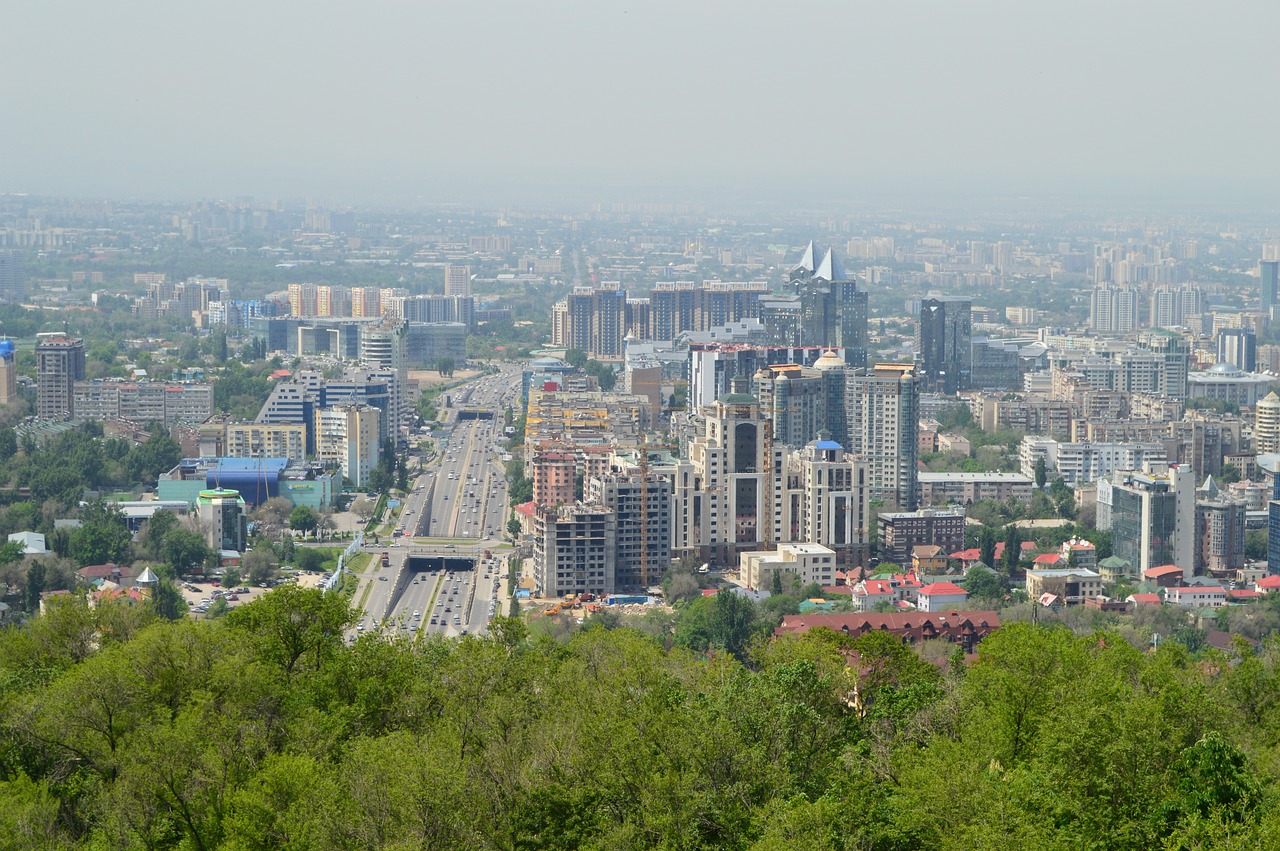
I was staying only one day in Almaty, so I didn’t plan or see much, but I definitely put it on my ‘comeback’ list because of all the trips you can take from there. I liked the idea of going on a hiking tour to the Charyn Canyon and discovering some natural landscapes close to Almaty. Also, as a passionate skier, I’d love to check the ski resort of Shimbulak. There are also several national parks and lakes I was told about, so my list with places to visit next time only grew longer. For this visit though, after a long walk around the city, I decided to head straight to ‘the source of eternal youth, beauty and health’ - The Arasan wellness and spa. Although I’m not a big fan of spa centers, I was curious to see the building that Almaty was so proud of. Also, if they had some secret elixir of youth, I wanted to try it.
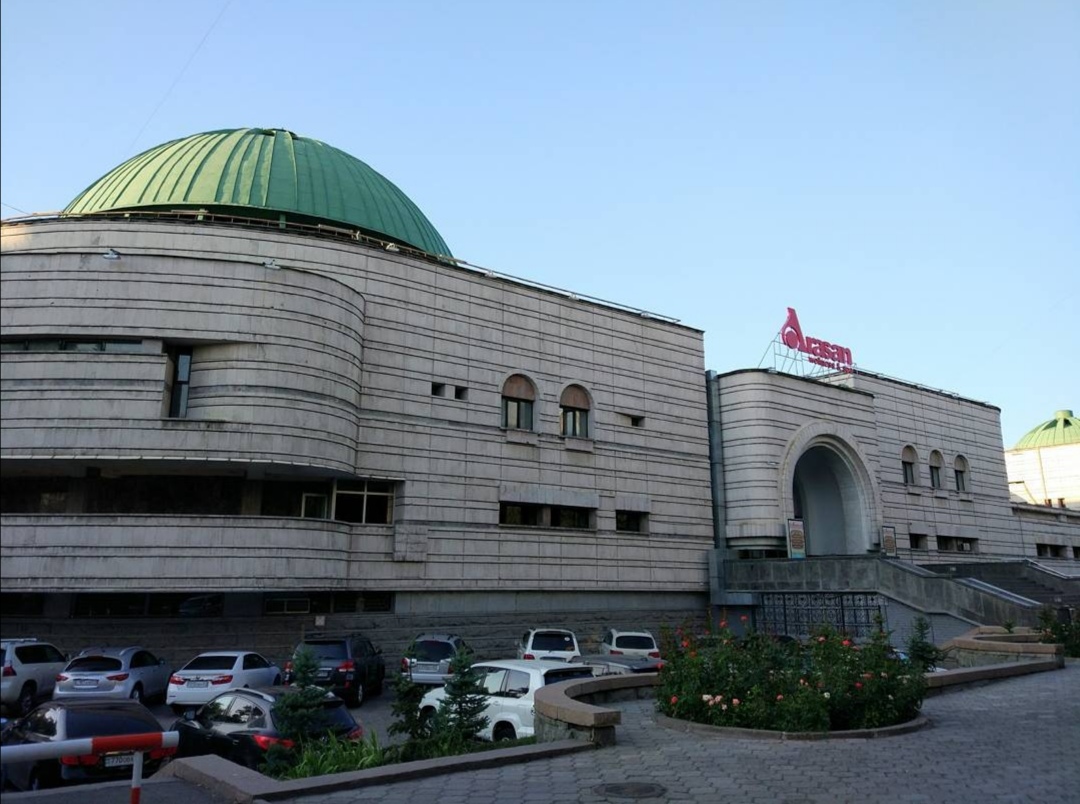
The baths were completed in 1982 and the building was an example of a modern architectural style of Central Asia. Architects were said to have traveled to Tashkent, Baku and Budapest looking for inspiration in some of these cities’ famous baths. Although impressive on the outside, once I got there, I focused more on the services provided inside because at that point I really needed some relaxation. I figured I’d have two hours just for myself in a quiet corner I “marked” by placing my towel, but man, was I wrong. Soon I came to realize that I was the only woman by herself, and whether other women thought I’d enjoy being in a company, or they just wanted to find out what a foreigner was doing there, yet a group of them decided to join me. What started as an informal chat in which they suggested I tried some beauty treatments offered at the complex, ended with two of them telling me about their sons who were not married and were apparently looking for a wife. Although I had to decline politely an offer to dine at their house (and meet their sons), I did take their advice to check the beauty salon. Maybe I didn’t find the fountain of youth, but I did relax and at least I knew where to go if I ever needed to look for a husband.
Later that night I was thinking about Silk Road merchants who traveled this vary same route as I did. Shaping the Silk Road network wasn’t merely for trade purposes. Different ideas, religions and skills traveled this road too. The same old road had always been there; it was the people who ventured them that changed through centuries. So, there I was, another traveler, thinking about the new ones that would keep coming in the years and decades to come. I remember having the strangest dream that night of being in a camel caravan that got attacked by a Mongolian tribe. It felt so real that it made me wonder if past lives existed and if I had actually lived one along the Silk Road. But then I realized it must have been the steam from the bath that triggered all those crazy dreams and thoughts.
I was ready to say goodbye to Almaty, at least for this trip. The next train was taking me to Ürümqi in China, the last country of my Silk Road adventure. There are two trains per week leaving for Ürümqi, a Kazakh train that goes on Sunday, and a new Chinese one that I took that leaves every Monday morning around 9am. The latter one was introduced in 2017 on a new route that shortened the journey between Almaty and Ürümqi by almost seven hours. The Chinese train offers only soft sleeper class on this route with 4 berths in a private compartment. A lockable compartment comes equipped with basics so that a 24-hour ride is made as comfortable as possible. A pillow, sheets, and a blanket are provided, and you’ll find a compartment to have also an air-conditioning, reading lights, a button to call a conductor if needed, two power sockets and a mirror on the door. The space under the lower beds or above the door can be used to store luggage, and when it comes to toilets and a washing facility with two sinks, they are located at each end of the carriage. Make sure you have your own towel and toiletries with you as they won’t be provided. Also, very important, there was hot water available but no restaurant car, so bring your own food and drinks, and make sure you have enough for a day long journey.
Around 3pm we reached Altynkol, the Kazakh side of the border, where I had my passport and bags checked on the train. I was asked about where I’d been in Kazakhstan and if I’d been traveling alone. After an hour and a half, we started moving towards Chinese border. The passport and customs check on the Chinese side at Horgos looked quite different and it took longer than on the Kazakh side. First, I had my passport and some bags checked by border police on the train, asking me where I’d been coming from and about my final destination. They collected our passports and an immigration card we had to fill out before reaching the Chinese side. Then we all had to leave the train with our luggage and walk to the customs center that looked like an airport terminal. I had all the bags scanned, and all my electronic devices were carefully examined. They also wanted to know if I had any books with me, which they also took a close look at. I was again asked several questions about the purpose of my visit, and before handing me in the passport, I had my fingerprints and picture taken.
By the time I was officially in China, it was around 9pm. The time difference (2 hours ahead of Kazakhstan), plus waiting for the wheels on the train to get changed and hence leaving Horgos two hours later, made the whole process of crossing the Chinese border feel like it’d lasted forever. However, once I was back in the compartment, it took me less than 5 minutes to fall asleep. I arrived at Ürümqi South railway station early in the morning, so I had an entire day to spend in Ürümqi before boarding the train to Xi’an.
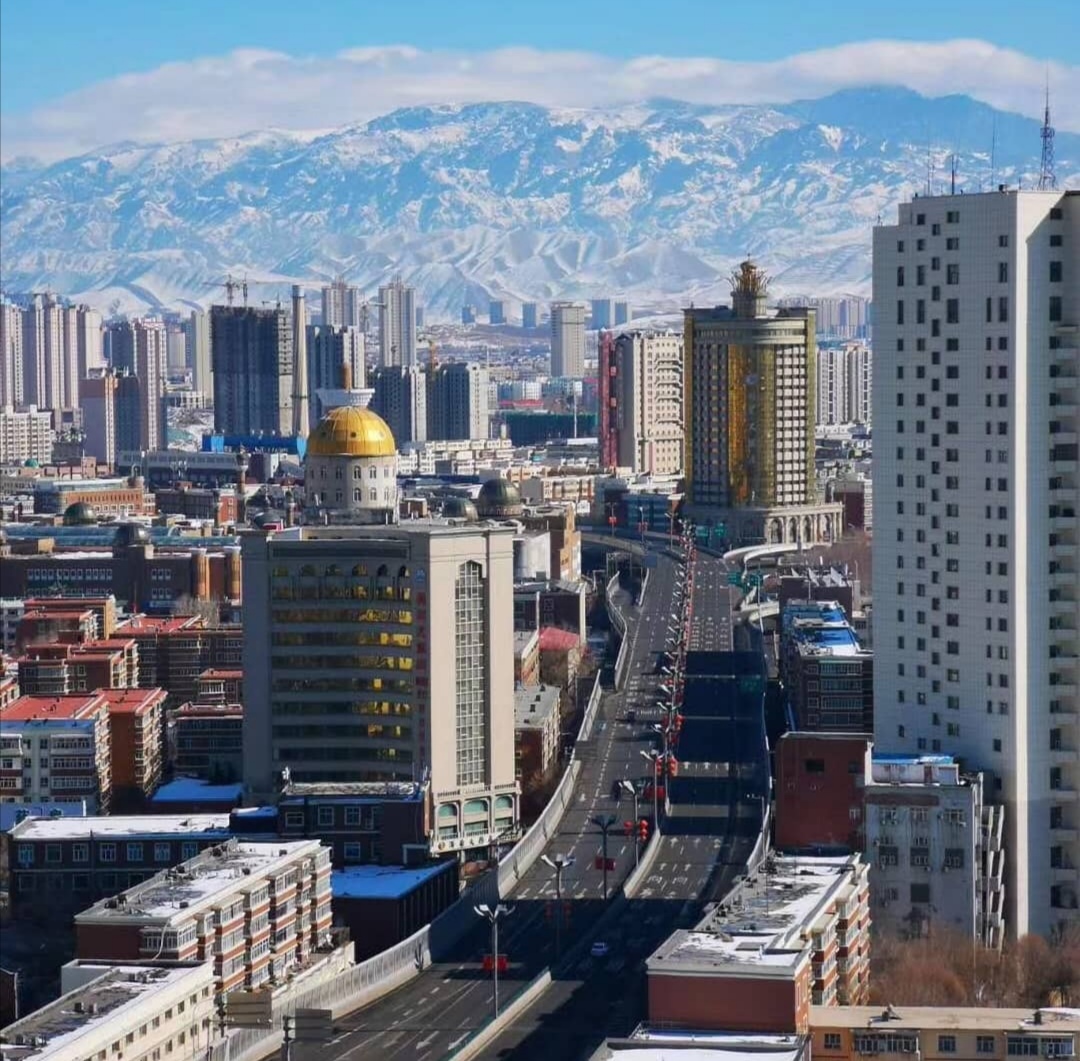
There are two railways stations: the primary one that has been used for decades called Ürümqi South, and the new one opened in 2016 called Ürümqi High Speed Station. As its name suggests, all the new high-speed trains leave from this station, but I’ll get back to train types in China a bit later. Ürümqi South train station was easy to navigate around, signs come in English as well as Chinese, but expect to spend at least 30 to 40 minutes to get through all the security checks. There are 3 floors on the station, and it took a while to adjust to seeing and hearing Chinese everywhere. After leaving my bags in a luggage office on the first floor and grabbing some on-the-go breakfast from a mini market, I took a taxi to my first stop for the day.
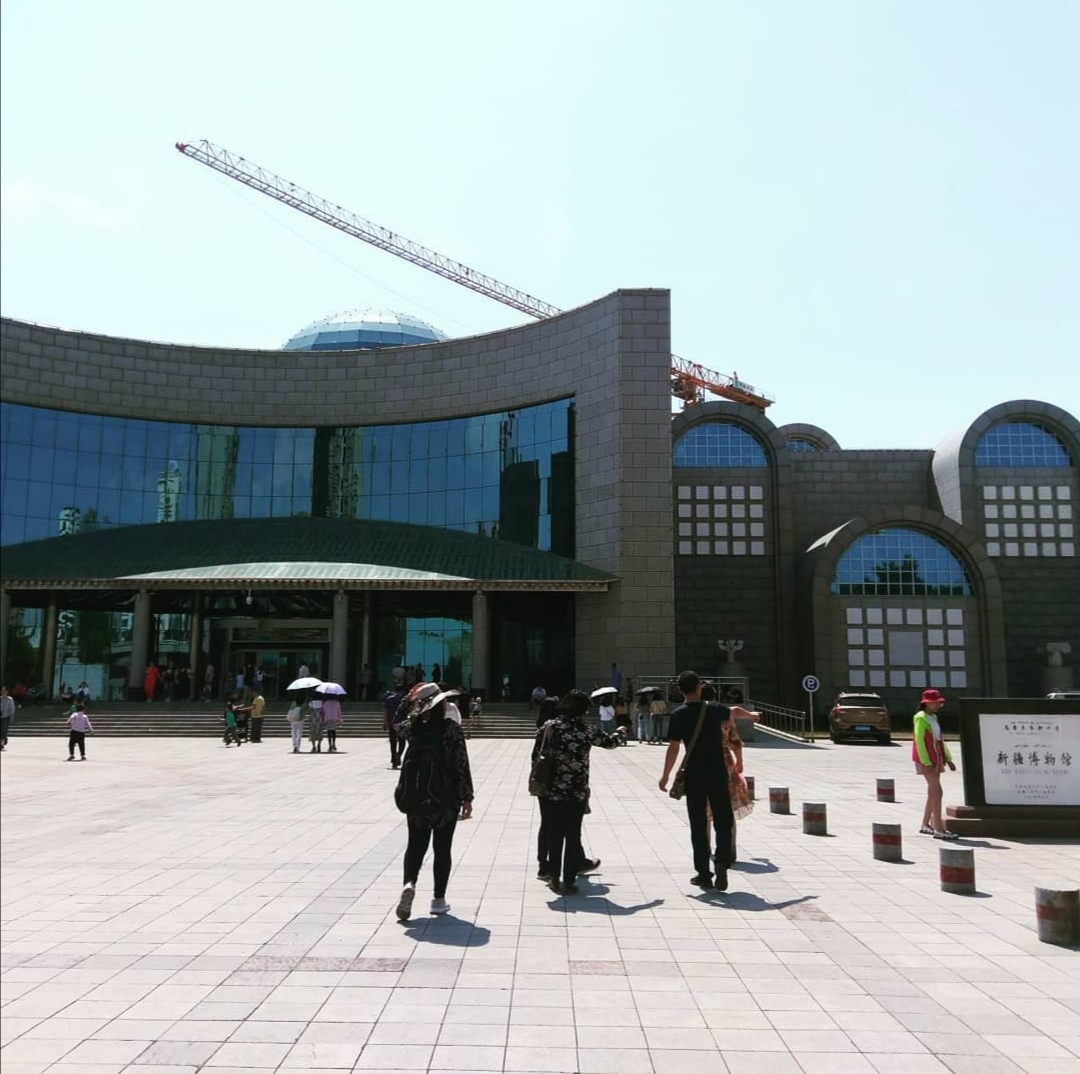
I wanted to visit The Xinjiang Regional Museum first because the tickets for 2.000 visitors allowed daily were issued every hour. I was in the second group that entered the museum, so I headed straight to the Silk Road exhibit; after all, where else could a Silk Road traveler possibly start from. The exhibit contains a wide collection of objects excavated over time mostly in the Taklamakan Desert and related to various caravan routes. I learned a lot about Xinjiang’s history and ethnic minorities, but I’d suggest you get at least an audio guide in English. Another exhibit at this museum that attracts visitors who come to Ürümqi is the collection of mummies.
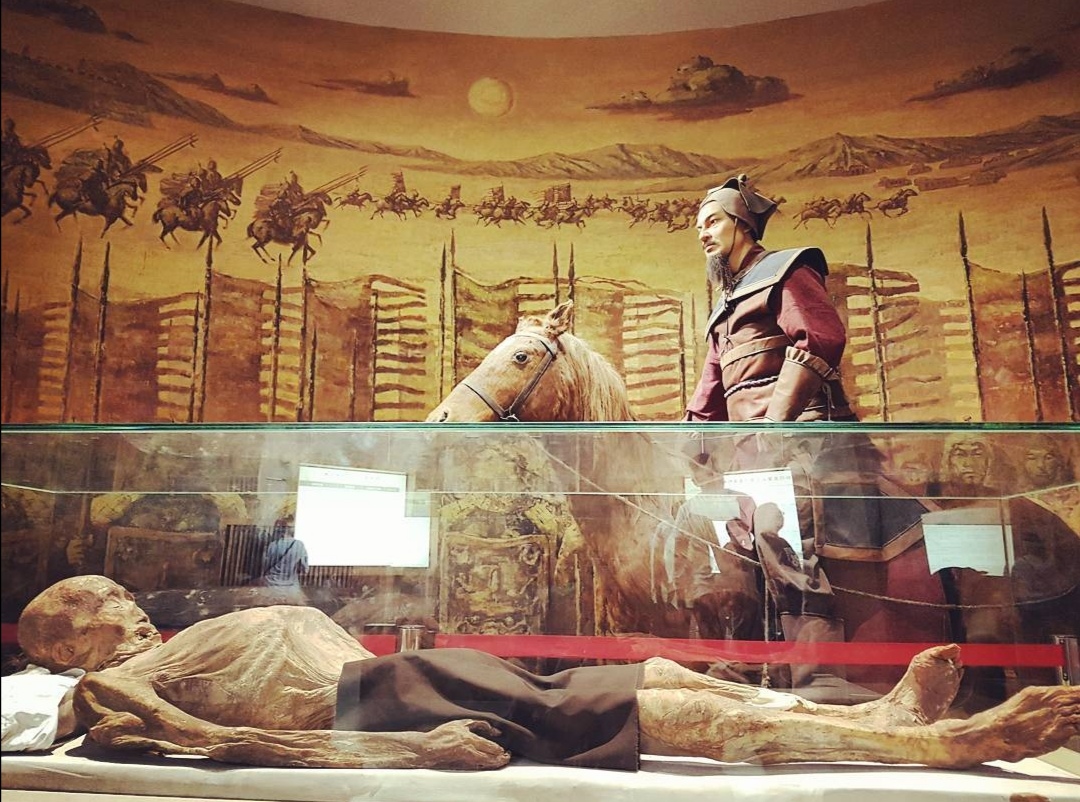
The first one to see is the 'Loulan beauty', a 4000 years old mummy of a red hair European looking woman. Excavated 30 years ago, the ‘Loulan beauty’ is one of the oldest and best-preserved mummies in the world. Along with other Indo-European mummies found and their artifacts, these discoveries shed a new light on the history of the region and people living in the area of Xinjiang. I could easily spend a whole day at the museum as there were in total over 50.000 items on display, but I still had one more place I had to check before leaving Ürümqi.
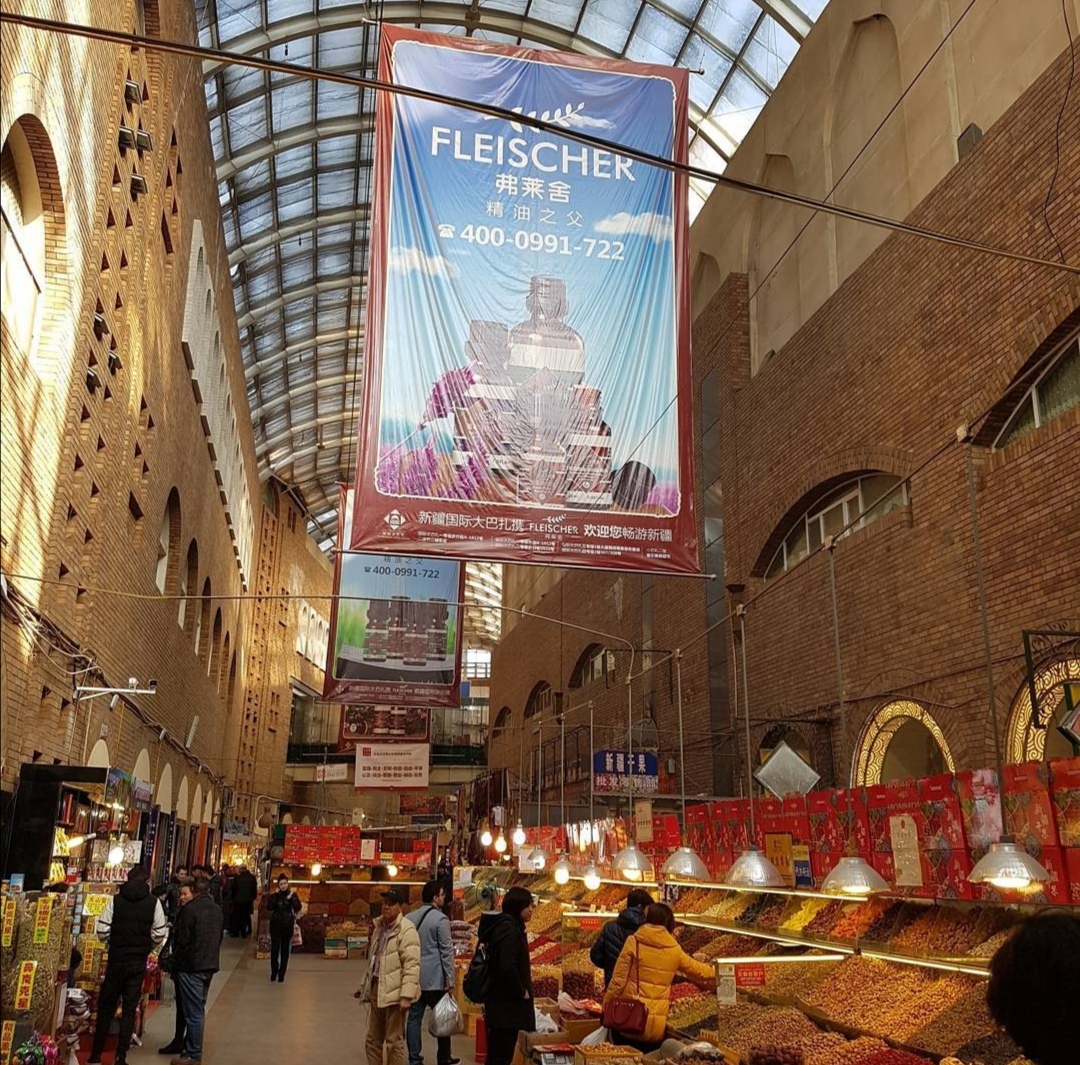
At the Grand Bazaar you can shop for local hand-made products such as rugs, carpets, musical instruments and all sorts of Uygur souvenirs, as well as different food and beverages. Inside the Bazaar, I ate my late lunch in a restaurant that served Xinjiang dishes. I ordered several plates on the pretext of exploring the Uyghur food and tastes, but the truth was that the food looked so good, and my hungry eyes wanted to try it all. As I was mixing all the dishes, making them into one big plate, some local people eating in a restaurant seemed to closely look at what I was doing. I couldn’t tell if they were shocked or wondered how come they’d never tried it themselves. It was probably the first one, but I still chose to believe that right there, at the Grand Bazaar, I set some new food trends. Before going back to the train station where another round of passport and security check awaited me, I spent some time enjoying in a cultural dance performance. I’d been asked by some local people to have a picture taken with their kids who enthusiastically smiled at me. Afterwards, they tried to persuade me to dance and offered to teach me some moves, but I didn’t accept the challenge.
Back at the train station, it took me about an hour to get through all the controls, stock up on some food in one of the supermarkets and find the platform from where a “Z” train was leaving for Xi’an. The letter in front of a train number tells about the train’s category. There are two categories in China: high-speed trains that are usually known as “G” or “D” trains with a speed up to 300km/h and regular trains known as “K”, “T” or “Z” trains with a speed up to 160km/h. The high-speed trains offer first and second-class seats, as well as luxurious leather seats in business class that can recline to a flat bed. Although some high-speed “D” trains have soft sleepers with 4 berth compartments, it is usually the regular trains that have overnight compartments. Three types of regular trains differ in speed that they can develop, and the number of stops made throughout the night. I was on a “K” train to Ürümqi and to Xi’an I had a soft compartment with 4 berths booked on a “Z” train.
Classes that are usually offered on these trains are soft sleepers (considered firs-class) with 4 berths and hard sleepers (considered second-class) with 6 berths. While soft sleeper compartments can be locked, berths in hard sleeper compartments are in an open area. Also, beds are narrower, and sitting is possible only in the corridor. On some trains there’s a deluxe sleeper with 2 berths, a sofa and a private toilet, but there wasn’t one on the train I took. Some trains offer soft and hard seats as well, but for a long trip such as this one (nearly 27h), I wouldn’t suggest that option.
A soft sleeper compartment was a lot like the one I was in on my way to Ürümqi, except that this one had a TV for each berth. Also, a lot more people were on this train that offered hard sleepers and hard seats as well. After boarding the train at 20.30, I started preparing for bed as I was really tired, so when the lights got turned off around 22.00, I’d already been half asleep. The next morning, I decided to make myself some coffee first. On Chinese trains there was always hot water provided where I could fill my cup and prepare some instant coffee or tea, unlike other travelers who mostly used it to prepare noodles. Although instant coffee was not my favorite choice, it was still better than no coffee at all.
I had plenty of time to “explore” the train as I stretched my legs going from one carriage to another. Hard sleepers reminded me of an open berth “platzkart” style on Russian trains. Lots of people sitting in the corridor, talking to each other, eating or playing cards. It felt cramped because both people and their luggage were everywhere.
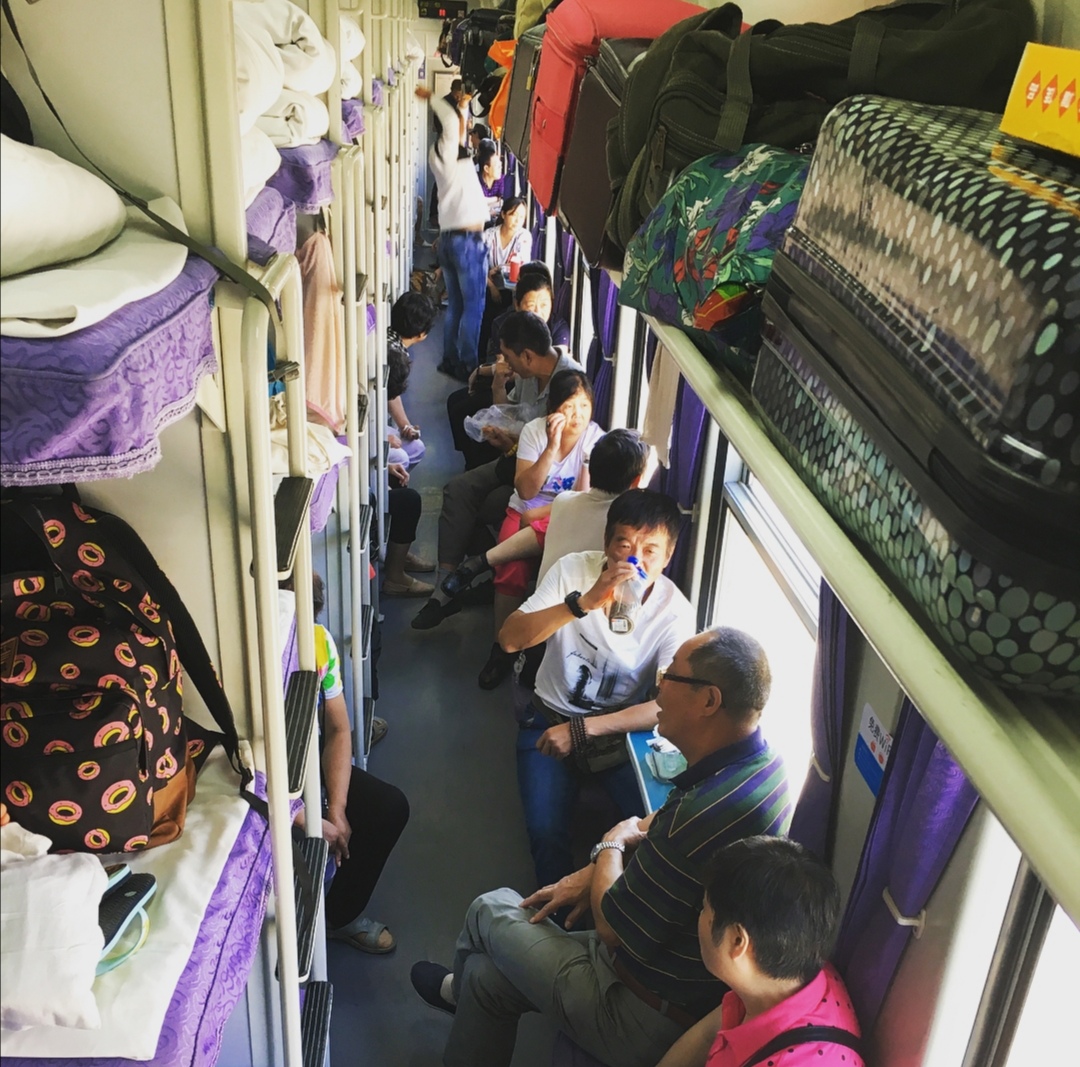
The racks across the berths reminded me of an airplane compartment above the seats. However, these racks seemed to provide little space, so some bags could be seen here and there in the corridor, slightly blocking the passage. Each carriage had a washing room and toilets provided, but make sure you bring your own towel and toiletries (toilet paper included).
In the afternoon I decided to eat lunch in a restaurant car but there was no menu in English, so I had really hard time figuring out what to order. As I was looking at what other people had and trying to see what kind of meal it was, a young woman sitting at the table across mine offered to help. I would’ve tried to google translate eventually as some Wi-Fi was available on the train, but she made my ordering much easier. Although her English wasn’t great she understood that I was looking for a simple meal, preferably some noodles with vegetables, and ideally not spicy. I invited her and her friends to join me at the table, so they tried to teach me some Chinese words. I wasn’t such a great learner, but I did manage to say “zaijian” (goodbye) in what they approved to be a well pronounced word before going back to my compartment. I still had hours to kill, so I went over my plans for Xi’an again, reading a bit more about all the sites I’d planned to visit. I was getting really excited, although I knew I’d have to wait the following day to go out and explore the city. The train was arriving around 23.00 in Xi’an, so I was just looking forward to checking in at the hotel and a long bath.
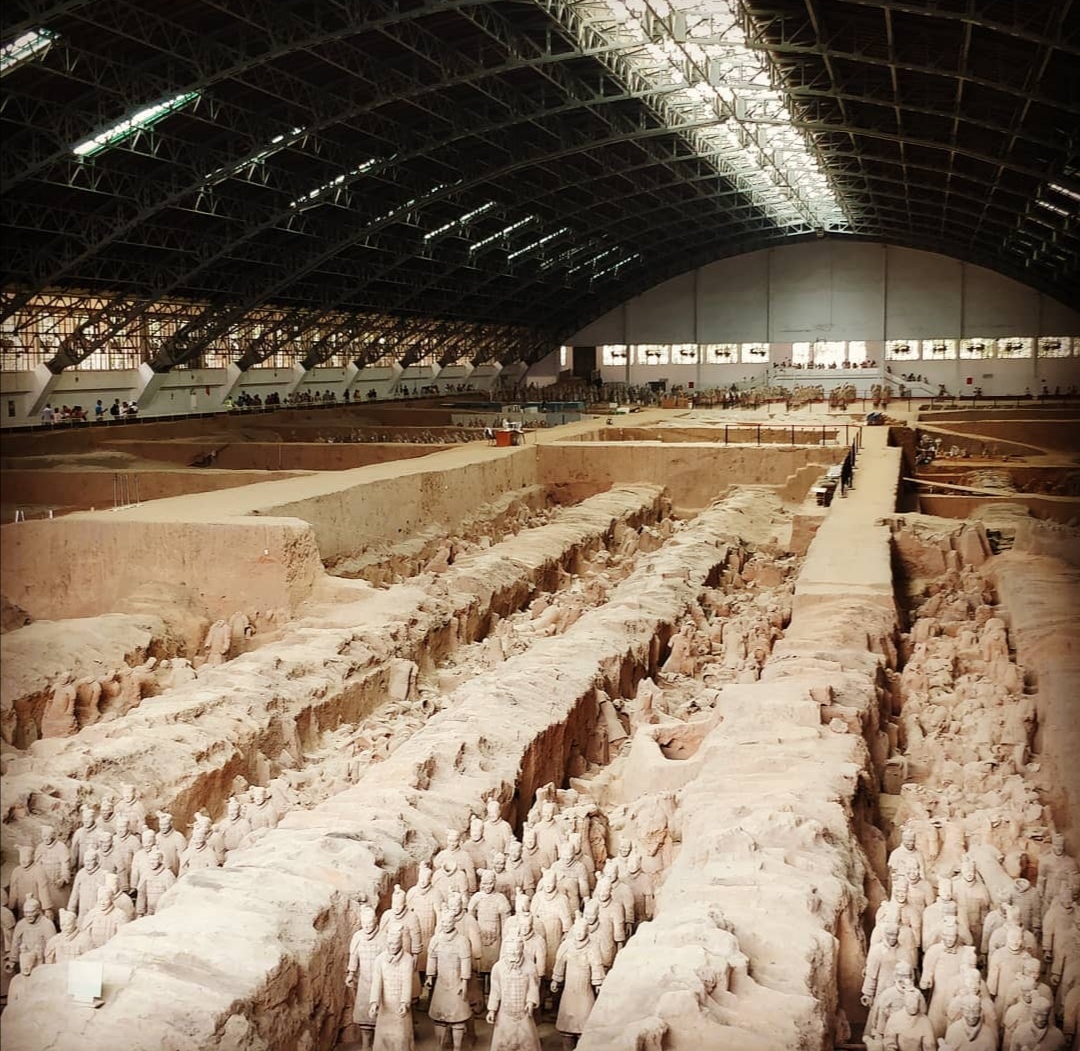
My first day in Xi’an was reserved for visiting the Terracotta Warriors. I remember when I was 17 years old and living in Texas that we went to the Forbidden Gardens, an outdoor museum west of Houston, containing all 6.000 one-third scale reproductions of Emperor Qin's terracotta warriors and a reproduction of the Forbidden City. Although it’s been years since the museum closed, I remember that right there, in the scorching Texas sun, I learned for the first time about Emperor Qin, his dynasty, and archaeological discoveries in Xi’an. I also remember thinking how far Xi’an must be and wondering if I’d ever get to see the real Terracotta Warriors. And now that I really made it to Xi’an, I was extremely excited. In a way I knew what to expect but at the same time I was aware that the experience of seeing the real size terracotta warriors was going to be completely different.
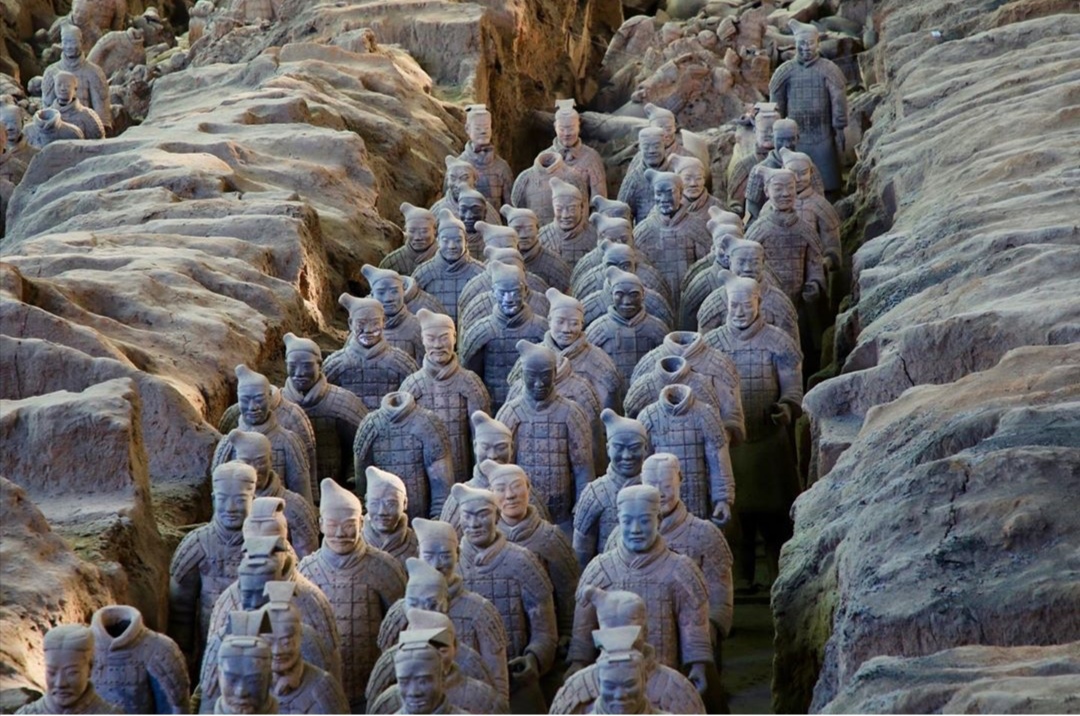
And it was. I was awed by the scale of those terracotta sculptures. An entire army in a row after row of warriors, all with a different face sculpted. Some looked so realistic, as if they were about to start talking. It was truly incredible! Although I didn’t understand what people around me were saying, I could still feel the excitement in their voices as they were trying to capture everything on their cameras or get a perfect shot.
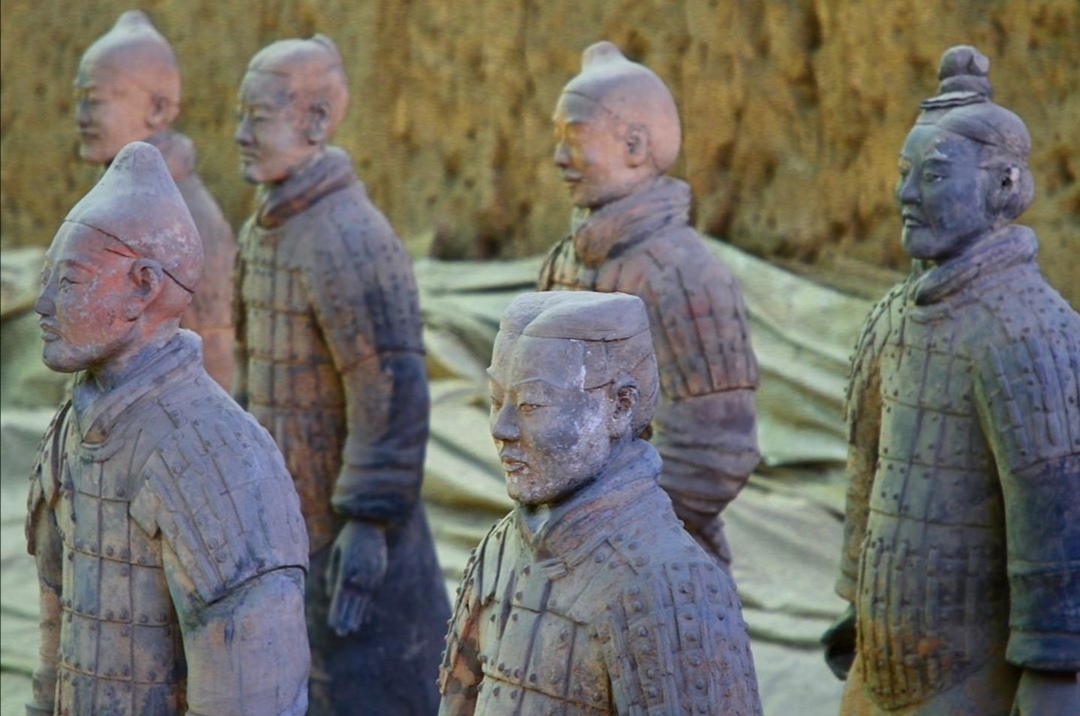
There were three pits in the museum and all of them were full of visitors. I couldn’t say I was surprised by the number of visitors because I’d read that the museum was the second most famous site in China after the Great Wall. In the years to come, we’ll probably see thousands of new warriors appear and maybe the Emperor Qin’s tomb unearthed. When a local farmer who was digging a well found the Terracotta Warriors, no one could even imagine how big and important this discovery would become. If you’re lucky, you might get to see and meet the famous farmer, Mr. Yang, who still occasionally comes to the site.
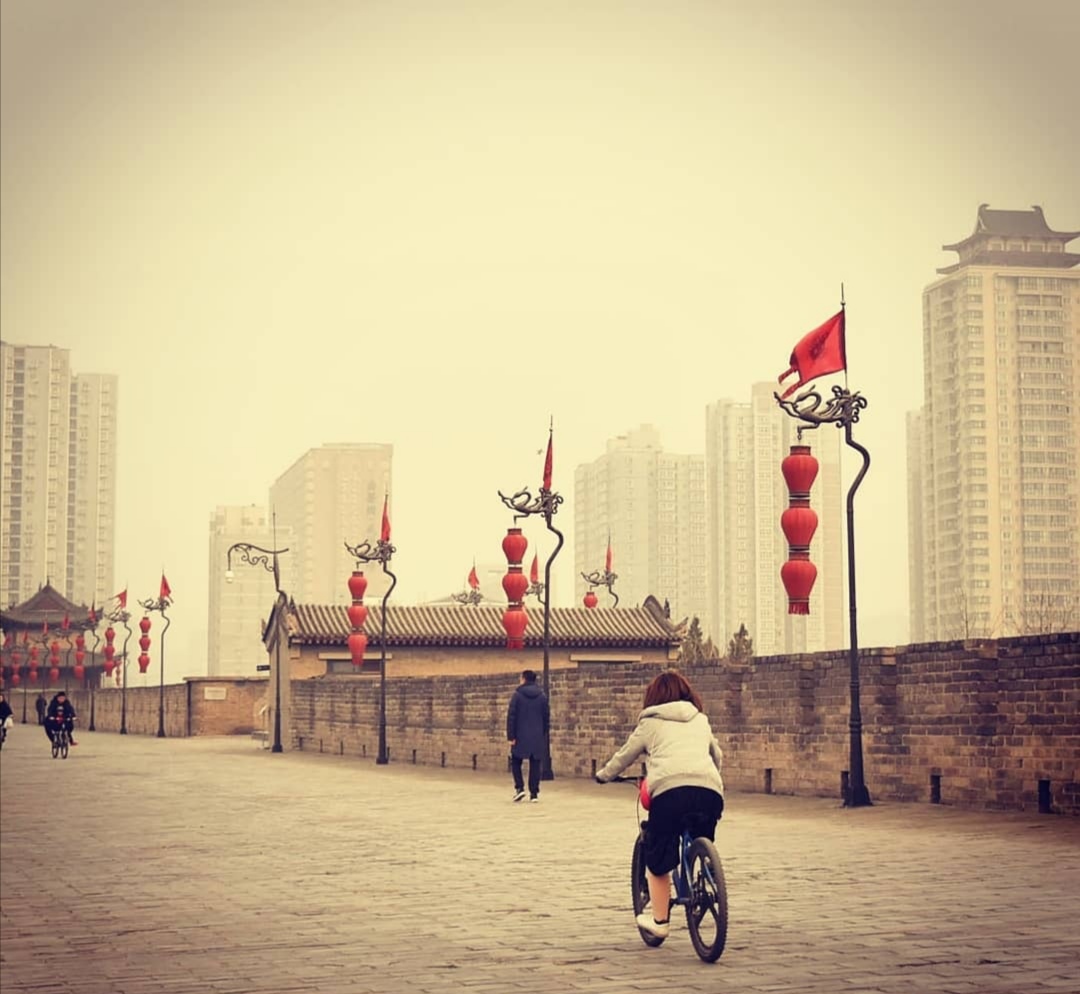
Seeing in person the army built to protect the Emperor Qin’s tomb was really amazing, and the museum should definitely be on your must-see list. Other attractions I truly enjoyed were renting a bike to explore the ancient walls of Xi’an from where I had views of different parts of the city, and visiting the Big Wild Goose Pagoda, a holy place for Buddhists. Originally built to a height of 60 meters in 652 A.D. during the Tang Dynasty, the pagoda had five stories. After an earthquake in 1556, the Ming Dynasty had it restored to a 64 meters tall structure with seven stories.
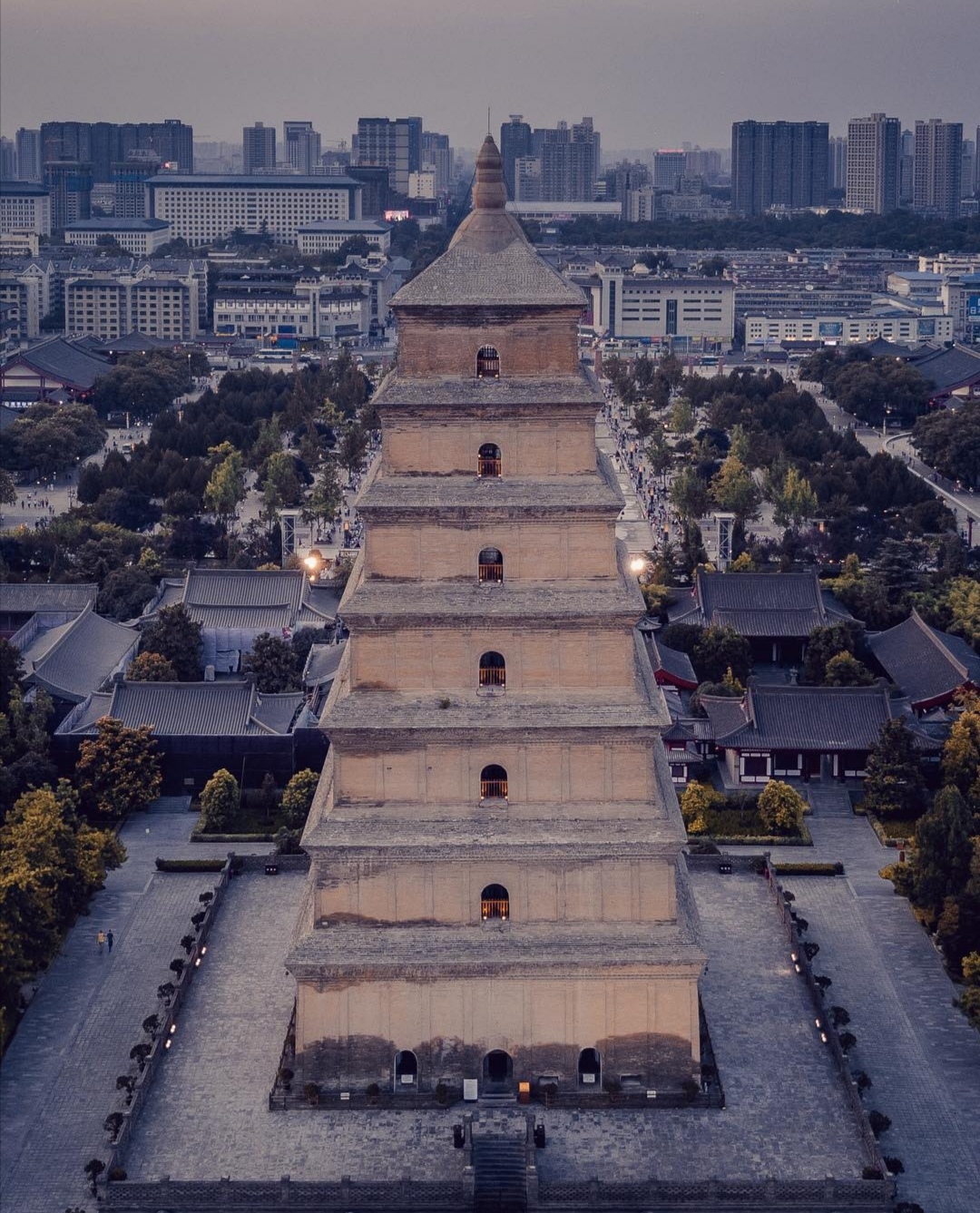
Apart from being an example of a traditional Chinese architecture that implied building with layers of brick without using any cement, the pagoda was a home to many Buddhist scripts and items. The story says that with the permission of Emperor Gaozong of the Tang Dynasty, a monk Xuanzang traveled along the Silk Road all the way to India where he obtained various Buddhist relics and scriptures. Upon his return 17 years later, the pagoda became the place where Sanskrit scriptures got translated into Chinese.
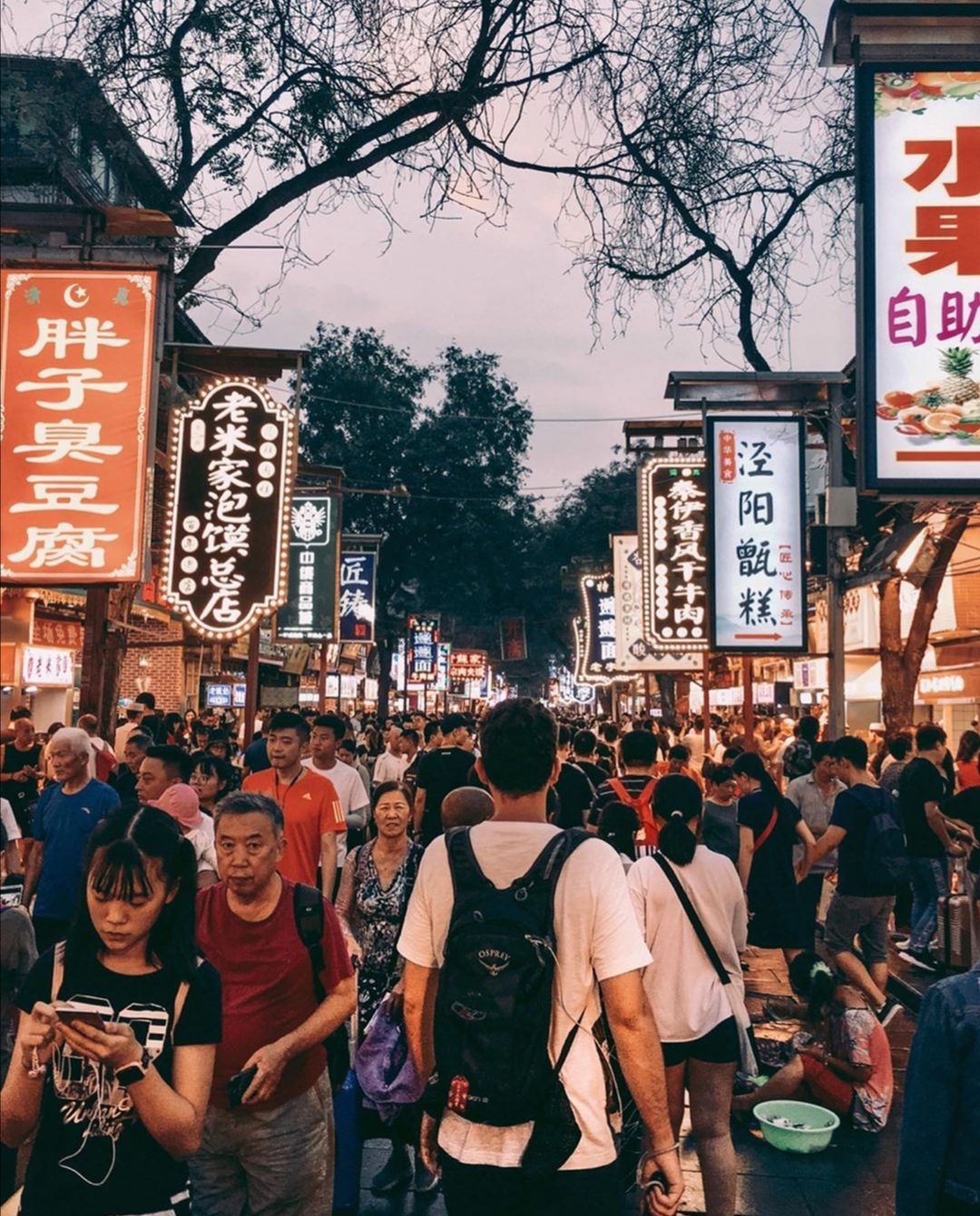
After visiting all the attractions in Xi’an, you’ll definitely get hungry. My suggestion is to check the Muslim Quarter which I called a bustling food paradise. Being on the Silk Road resulted in a large number of Muslims in Xi’an who significantly influenced the city’s cuisine. In their quarter, all the smells and lively atmosphere made it hard not to go back the following day. With lamb being the main ingredient, all sorts of dishes with all parts of lamb were prepared in different ways. If there’s a part of lamb you prefer, but also parts you’d never like to taste, it’s best to indicate so by showing directly on lamb carcasses that usually hang from the stalls. With various restaurants and food stalls spread in a number of streets you’ll find everything from dried fruits and cakes to noodles and lots of meat of course. In the evening there was some live music on the streets, so the whole experience was truly authentic.
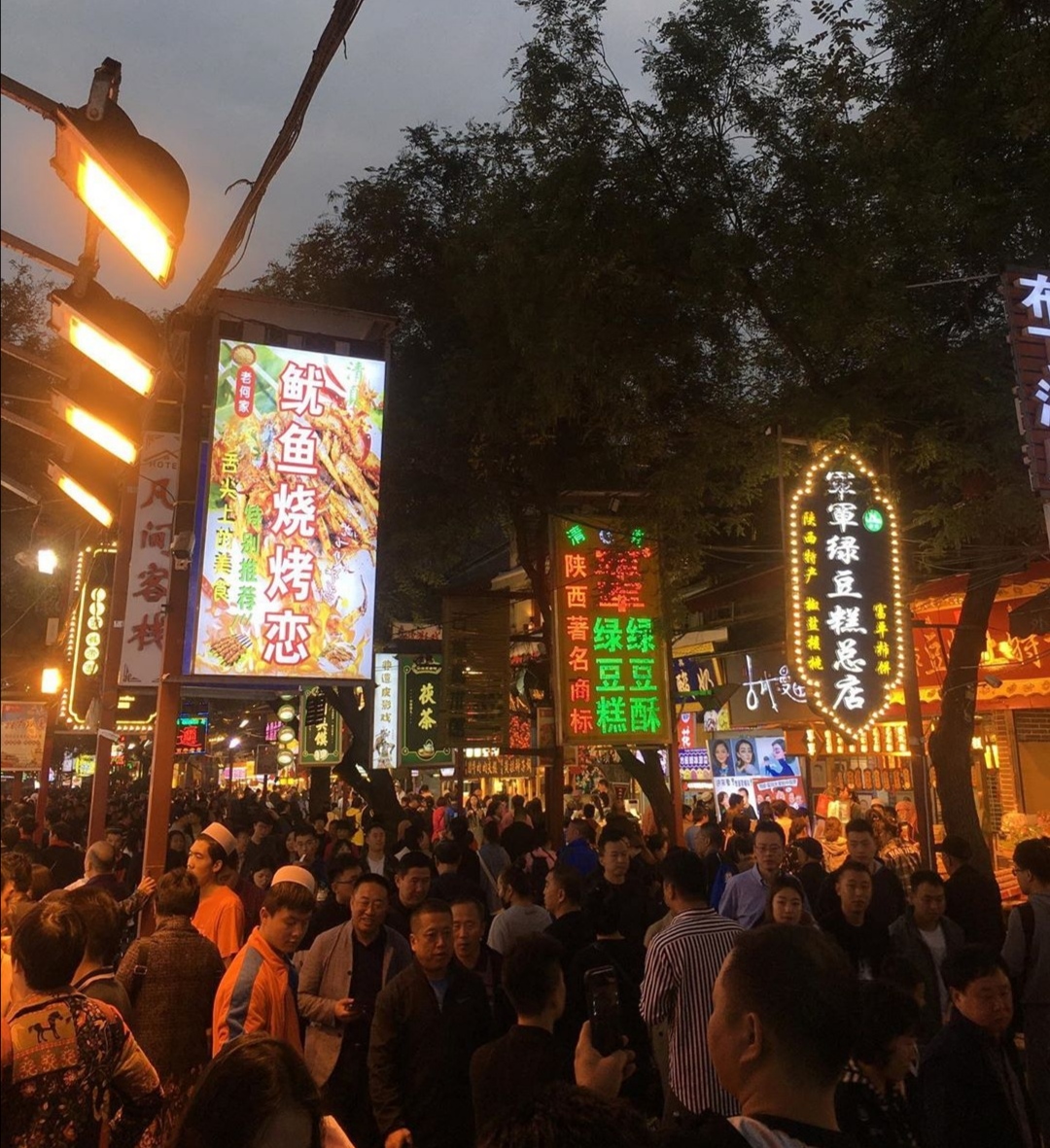
The Muslim Quarter is also known as Huimin Street because the people coming from Arabic counties who settled in Xi’an, on what we know today as the Muslim Street, were called the Hui by the local people. Xi’an was once the starting point of the Silk Road if going west or the final stop for those who were heading east. Unlike Marco Polo who ended his trip right here in the city of Xi’an, I still had few more stops to make on my journey. I’m sure that back then, when journeys took years, no one believed that one day we’d cover the same distances in a matter of weeks. The distance, however, from Xi’an to Shanghai with new bullet trains could be measured in hours. After two and a half days spent in Xi’an, I was ready to board a new soft sleeper “D” train.
When arriving in Xi’an, I got off the train at Xi’an Railway Station, but when leaving I had to go to Xi’an North Railway Station because this station was the only one operating the high-speed trains. The station opened in 2011, so it definitely felt and looked new. It was also really huge, and I read somewhere that with a number of platforms and high-speed trains departing daily, this was one of the largest bullet train stations in China. I found it easy to navigate around, signs do come in English as well, but my advice is to always have enough time for all the formalities and control checks before finding a way to the platform where your ticket will be checked.
The new capsule soft sleepers come with double-decker berths arranged in two rows with each one being in a small private compartment. Privacy is secured with a bed curtain provided for each bed. Equipped with a small table, an individual and reading light, as well as a TV and a power socket, everything I needed was at hand and I felt quite comfortable in my private capsule. Luggage can be placed under the lower bed or on the shelf next to the bed, and there’s also a hook for clothes you might want to hang in your capsule.
For those who have a fear of small spaces, maybe the capsule sleeper isn’t the best choice. However, when it comes to a berth that had clean bed sheets and a pillow provided, it was really comfortable. With the speed reduced to 150km/h and zero turbulence throughout the night, I could say that it was one of the best nights I’d had on this journey. The new capsule soft sleepers often get compared to older generation of trains, but to me capsule sleepers are completely different, both in style and comfort. They can easily be compared to flying first class on major airlines or even airport sleeping pods you can nap in before a flight. Each bed has a window and a window shade, so you can spend some time enjoying the views or darken your compartment even more. However, traveling on a capsule train was completely different from an old-fashioned train ride. It felt and even smelled somehow futuristically.
I set the alarm really early because the arrival time was supposed to be around 6.30am. In the morning I found the slippers that were provided as well, so I used them to go to the sinks and wash my face hoping to speed up the process of waking up. As on most trains both squat and western style toilets could be seen, but most importantly they were clean. In Shanghai I said goodbye to a capsule hotel and tried to focus on finding a way out of the station. Although it was early in morning, the Shanghai Railway Station was quite busy, so I was finally wide awake and ready to explore the so-called pearl of the Asia.
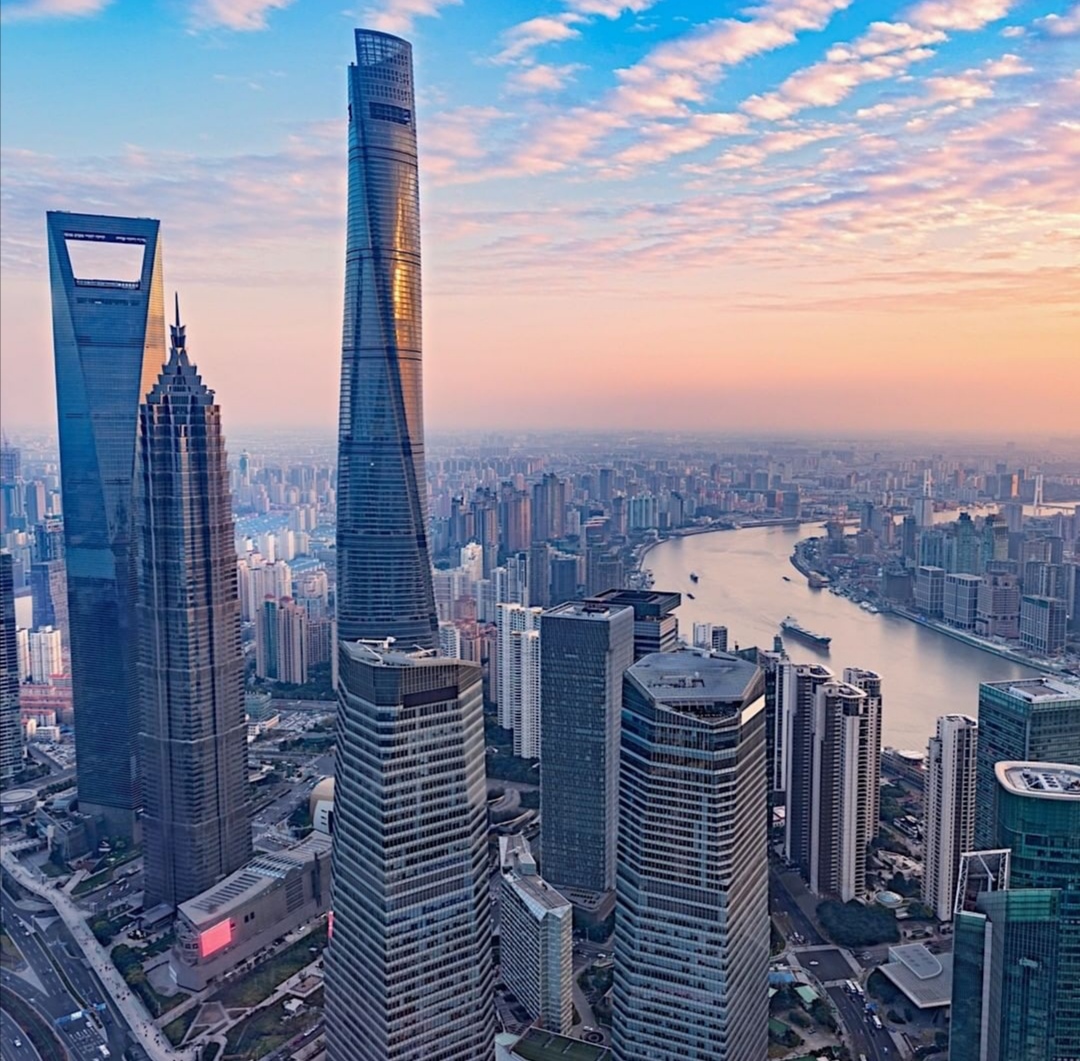
Although known as “The Paris of the East” or “Oriental Paris” too, Shanghai with its tall skyscrapers and bustling streets looked more like New York. Maybe I should’ve spent more time in Shanghai in order to find some similarities with Paris, the city where this whole adventure started; yet, the more I advanced to East China, the more distant Paris seemed to be. Still, there were some distances that could be covered from a bird’s eye perspective.
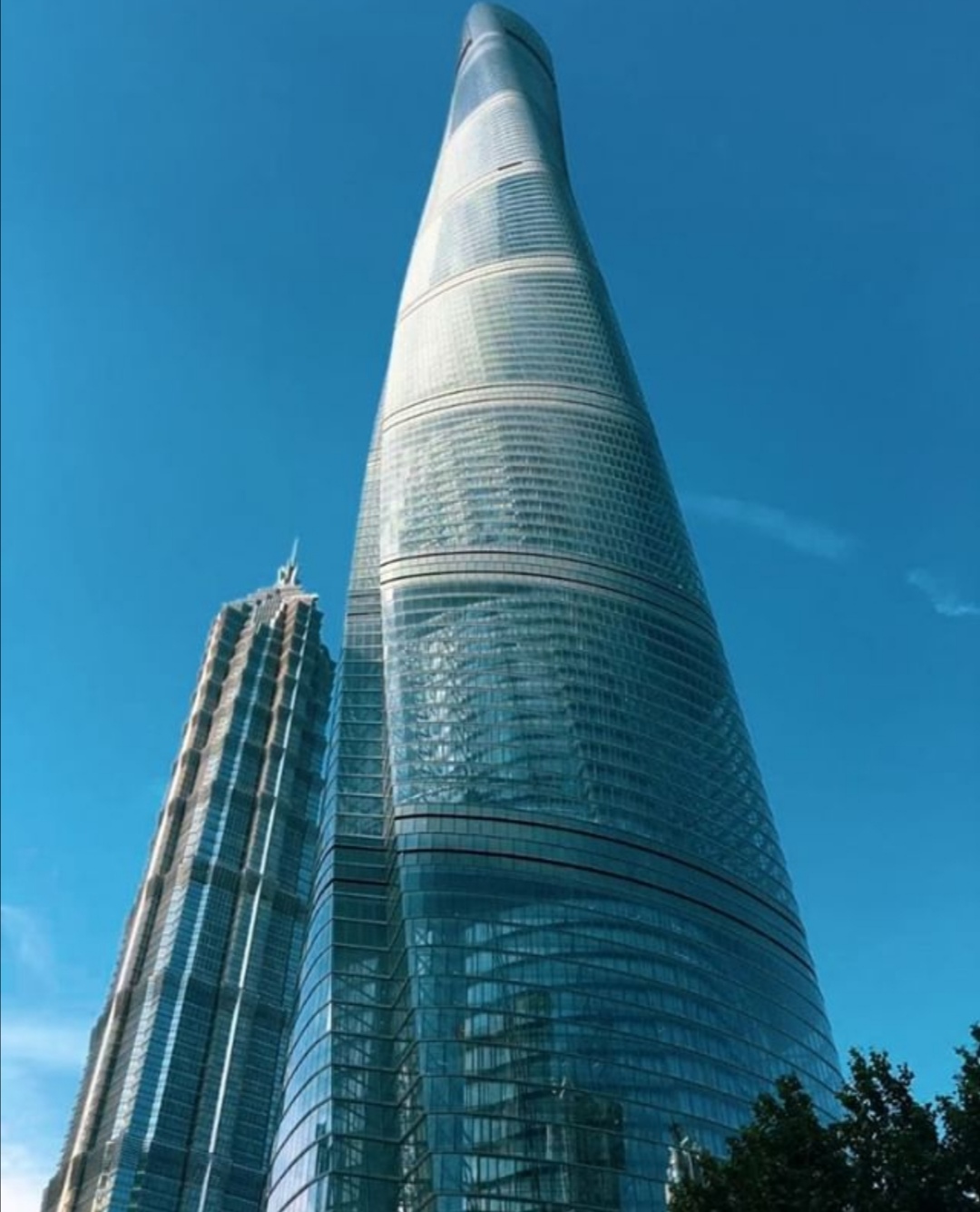
For the highest views of the city, I went to the Shanghai Tower, the tallest building in China and second highest in the world. For the highest building in China I wasn’t surprised that the fastest elevator was built, so in less than a minute I got to the observation deck. Luckily, I was not expected to have the quickest tour around the deck, but maybe “be the fastest to take a picture” rule did apply. Just be careful of selfie sticks getting into your face and you’ll be ok.
Shanghai seemed to get everyone crazy about being the first and fastest, but I decided not to give in. Therefore, I decided to find a more peaceful place and go to Zhujiajiao water town located some 50km from Shanghai. In a relaxed boat ride or stroll around Zhujiajiao, you’ll get to see traditional Chinese-style houses, some very well-preserved bridges and streets, as well as ancient buildings from the Ming and Qing dynasties.
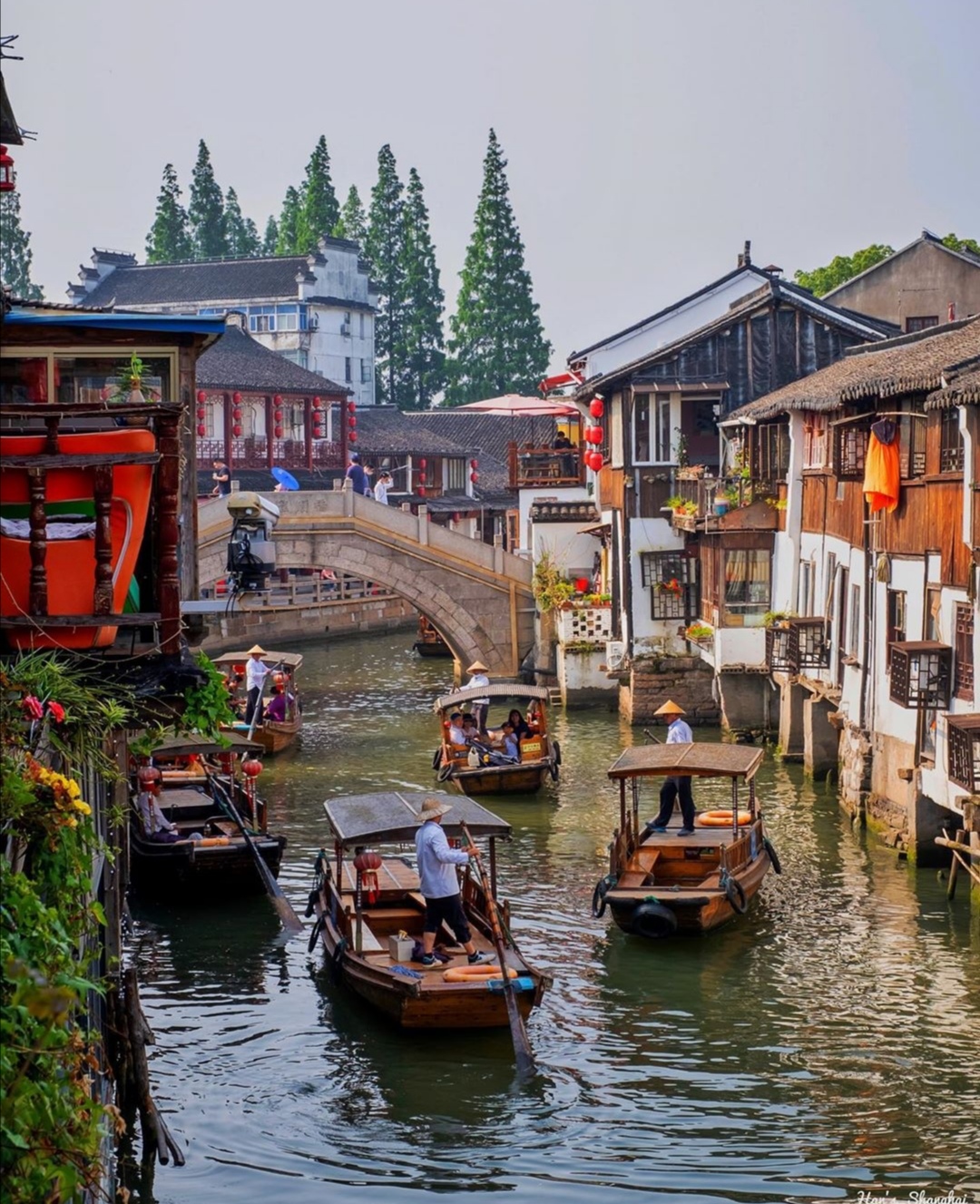
When you’re ready to take a break, there are lots of bars and restaurants on the old and narrow North Street. I really enjoyed in tranquility and somewhat idyllic scenery of this place. Surely, it was nothing like Shanghai, so I found some peace; at least for a couple of hours.
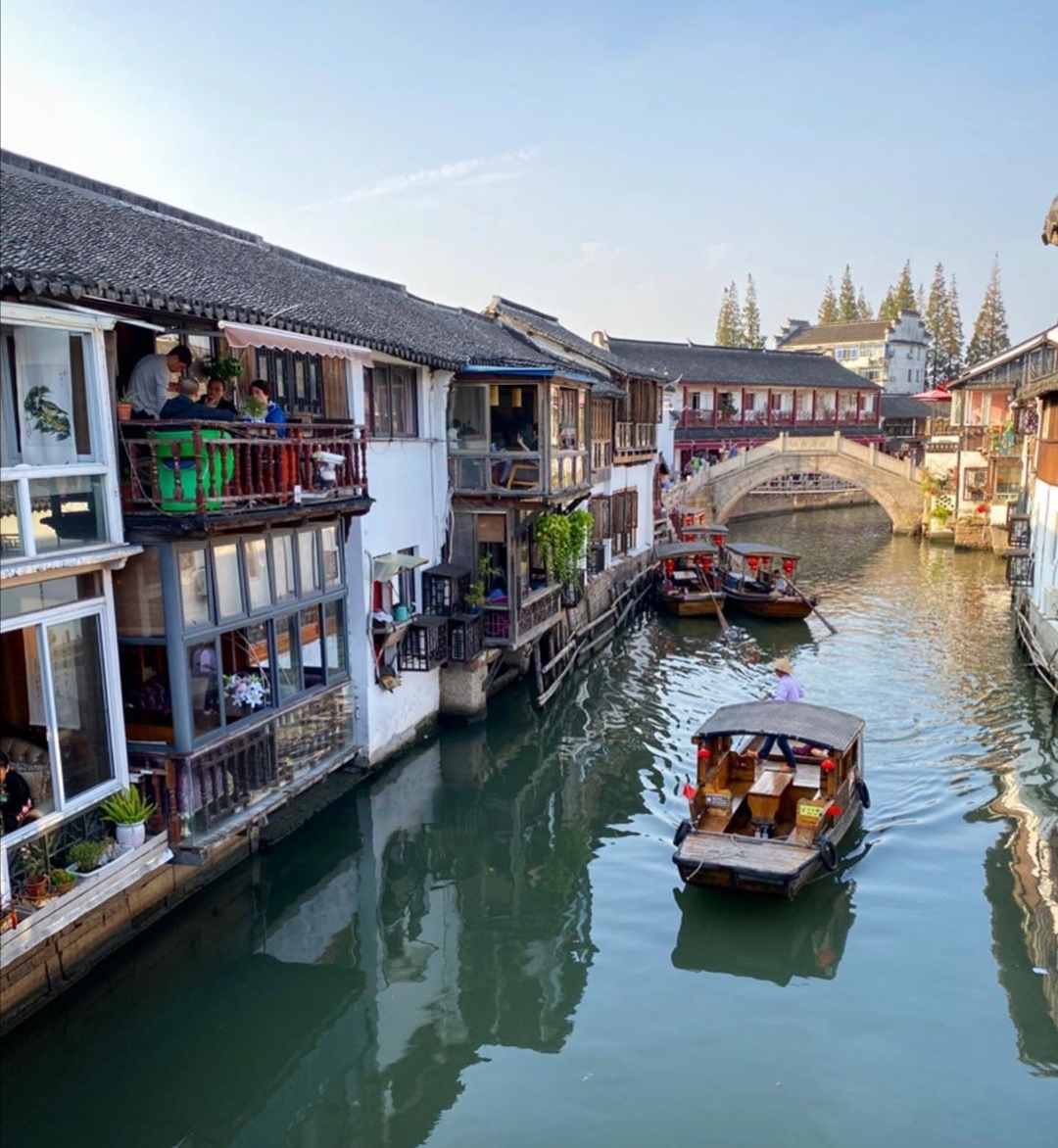
The evening hours were reserved for the greatest (again in superlative) acrobatic show. I realized that I’d never been in a circus before, so going to Shanghai Circus World to see an act “ERA Intersection of Time” was a show I put on my to-see list. I couldn’t really say if it was the greatest because it was my first and I had nothing to compare it to, but it undoubtedly had me on the edge of my seat.
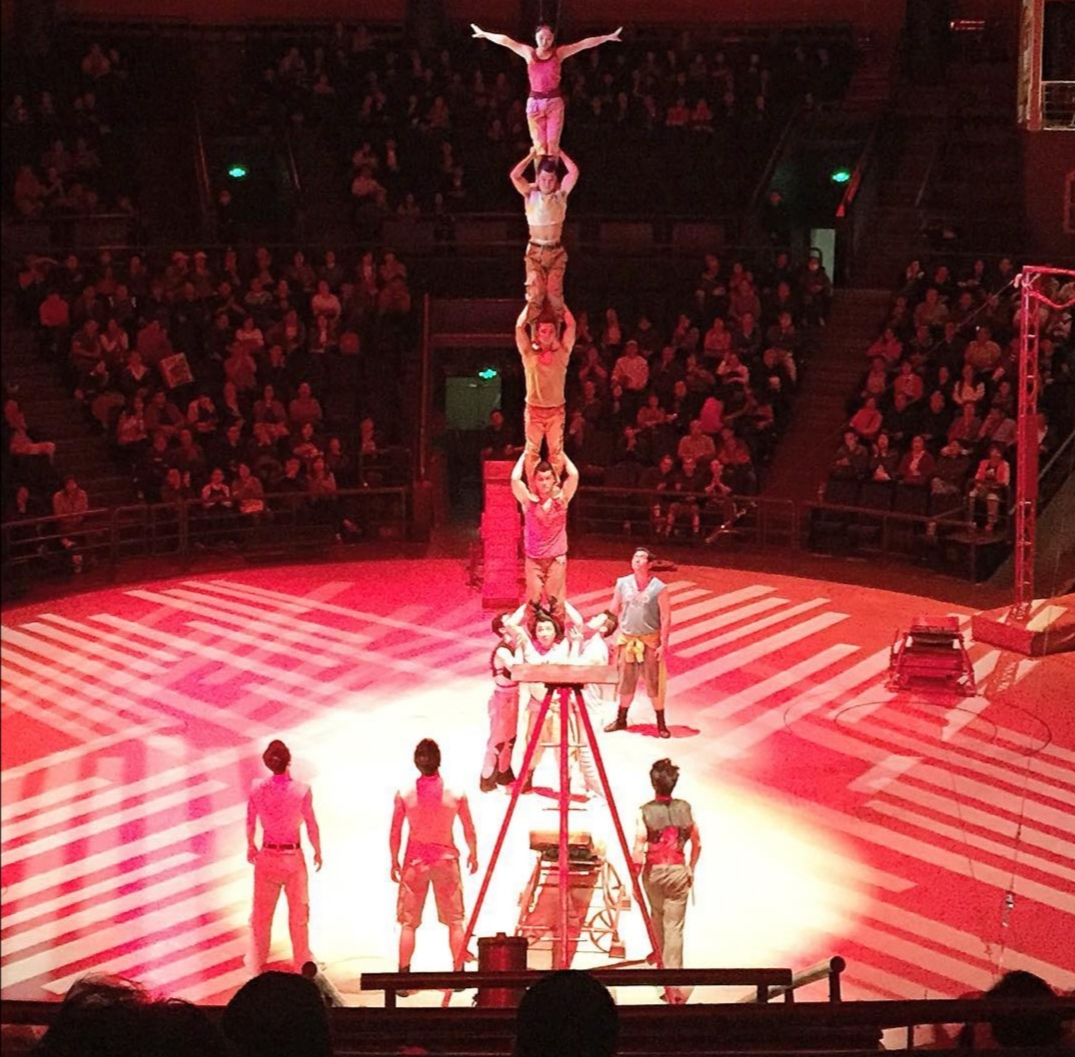
While the acrobats were twirling in the air and tossing each other around, I had a knot in my stomach. Some kids I saw in a row in front of me were thrilled and I just wanted to shout to them “don’t try this at home”. Only later did I start noticing the elaborate costumes on performers and some special effects used on stage. Maybe acrobatics and magic tricks and stunts were just not my cup of tea, but the show proved that human pretzel positions were totally possible. Unfortunately, I didn’t see myself doing any of them soon, or better say ever.
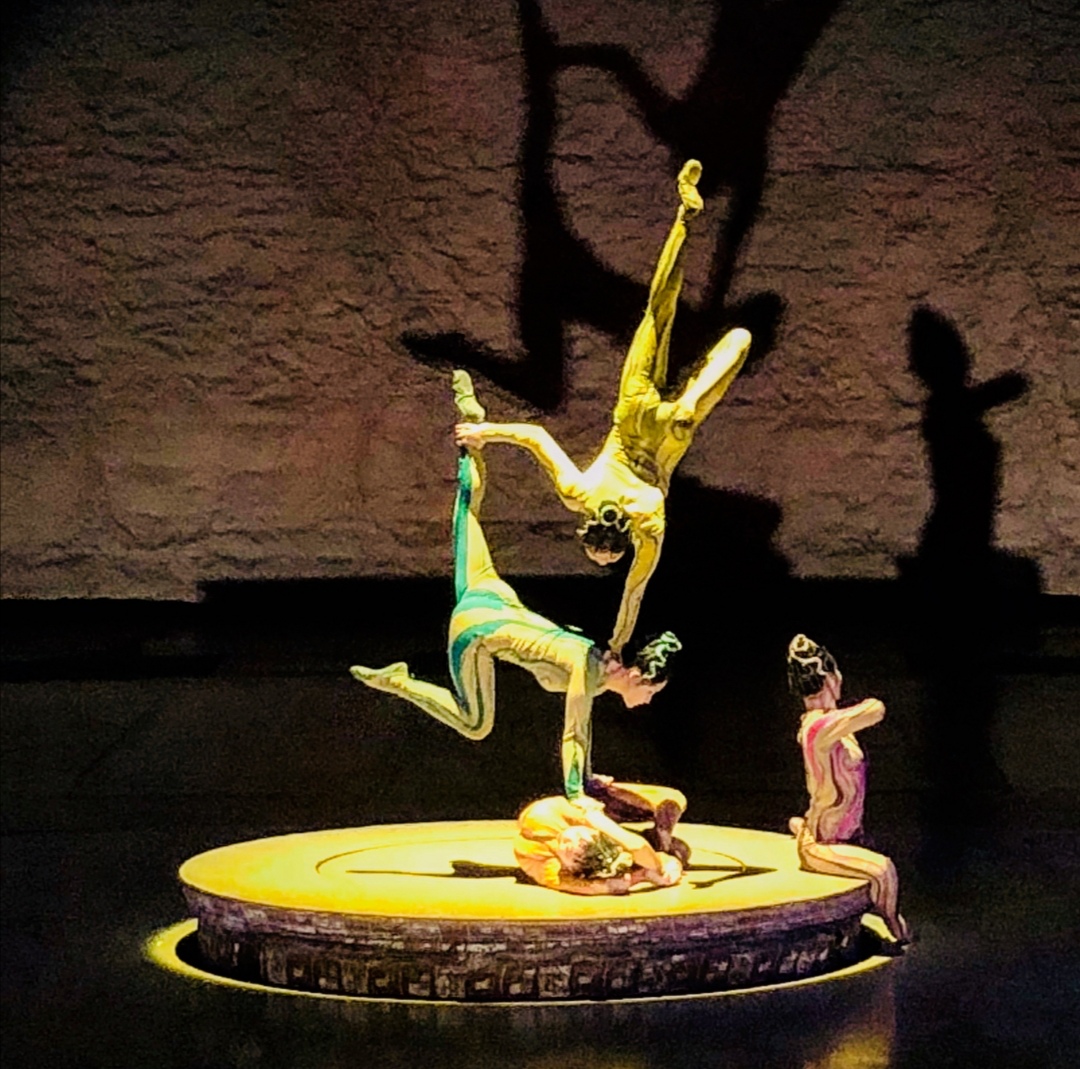
Although I usually prefer taking a night train, I wanted to experience what traveling on a daily high-speed train in China was like. A high-speed bullet train from Shanghai to Beijing covers a distance of 1318km in 4h and 30minutes.
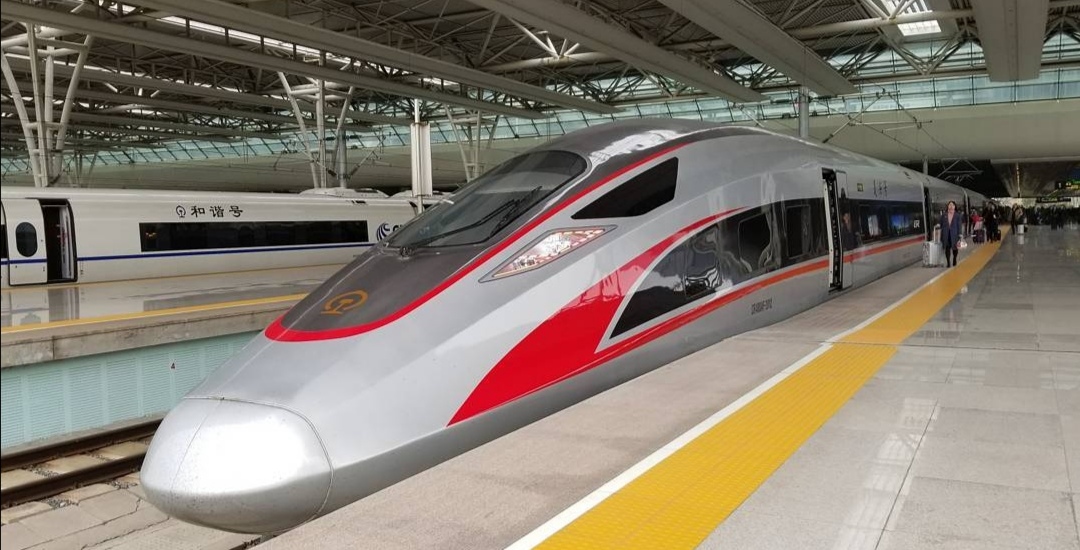
On bullet trains there are usually three types of seats: first class seat, second class seat and business class seat. In second-class there are five seats in a row all facing forward, and with a foldable tray attached to the back of the seat. First class seats are wider and offer more comfort as there are four seats in a row. There is a foldable table in the armrest, a footrest and a power socket between the seats in front of you. Luggage can be placed on the overhead racks or some extra luggage space provided between the carriages can be used as well. All seats can be rotated, so if you’re a group of 4 people and wish to face each other, that can be easily arranged. There are toilets, both western and squat style, as well as large sinks.
However, before I took a closer look at first and second-class seats, I headed first to a business class carriage to find my seat. A business class offers the ultimate comfort, and a seat that when reclined to a flat position was even more comfortable than some beds and berths on this trip. Definitely looked like first class seats on some flights that offer this kind of luxury, with snacks and drinks offered to you by a train attendant. Given the speed of up to 300km/h and more (you can check the speed displayed on a screen at all times), I really felt as if we were about to take off without leaving the ground. After initial excitement, I got really relaxed and my state of mind went the opposite way of the speed on tracks. I really enjoyed in a leisurely, laid back atmosphere of a business class.
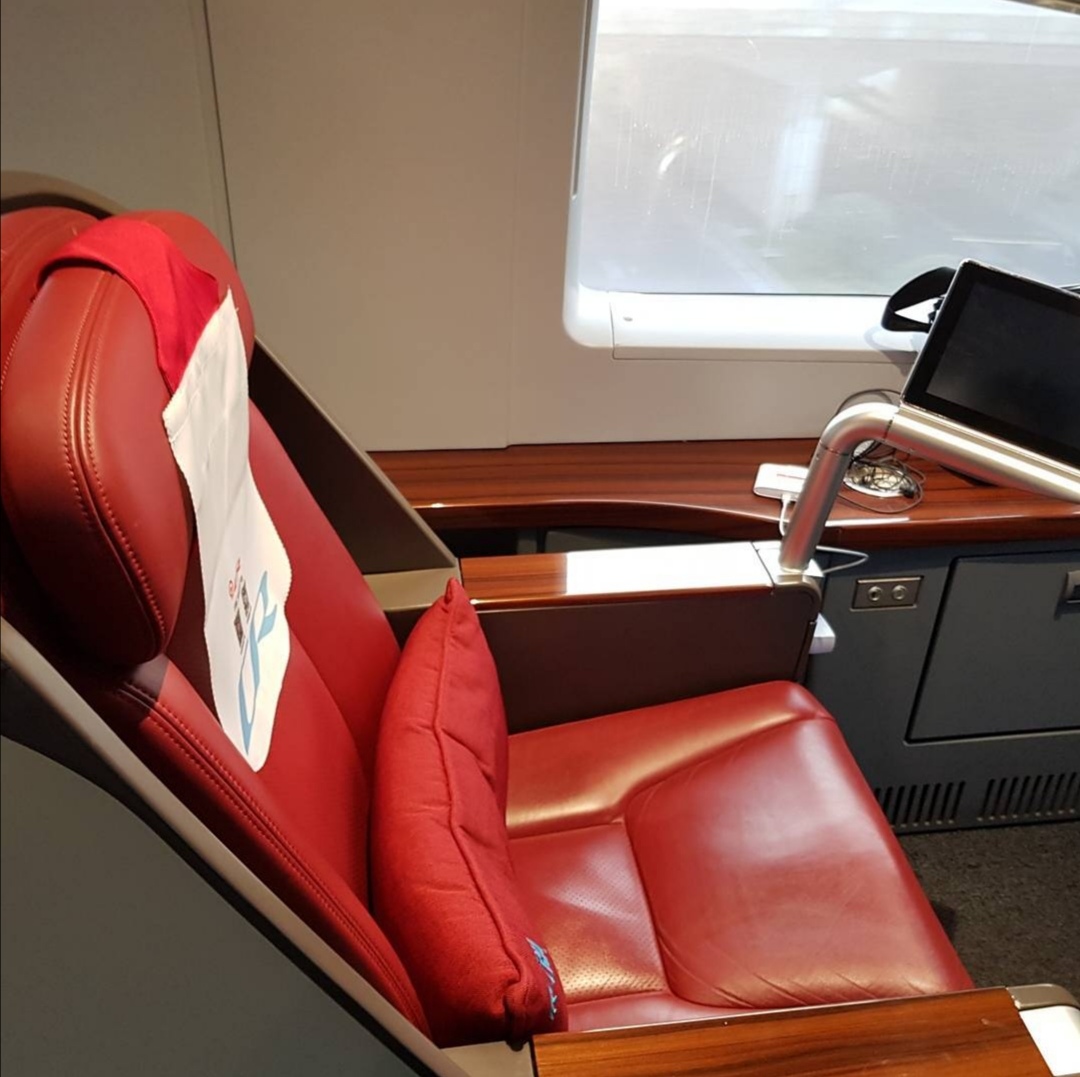
Some advantages of booking a business class seat can be experienced first at the railway station. At the Shanghai Hongqiao Railway Station there was a special area for passengers with a business ticket with free WIFI, drinks and snacks provided. Also, I had priority when boarding a train, so it felt nice to avoid all the hustle and people who elbowed their way to the platform. On the train I got to enjoy in a wide armchair looking seat equipped with a TV screen, folding table and LED light. If you need an extra pillow and/or a blanket, all you have to do is ask or press a button to call an attendant. A business class carriage is separated from other carriages which also ensured a quiet ride.
Around lunch time a boxed meal was served, so I could definitely say that the whole service and leather seats were really luxurious for a ride that took less than five hours. There was also free WIFI on the train, and food could be ordered on the phone from some of the restaurants located at the railway stations the train stopped at. I didn’t need to try it out though because I had a meal included, but many people seemed to use this option which resulted in lots of food “boarding” the train.
I arrived around 18.30 at Beijing South Railway Station where a friend with whom I was staying for five days picked me up. I finally made it to Beijing, the capital of China, and I used my visit well to explore the sites I had on my wishlist. There were so many amazing places to go to and experience in Beijing that offered a full cultural immersion. The city’s ancient and imperial landmarks stand side by side with modern and futuristic skyline which makes the contrast between old and new constantly present. However, be prepared that not even a week is enough to see everything.
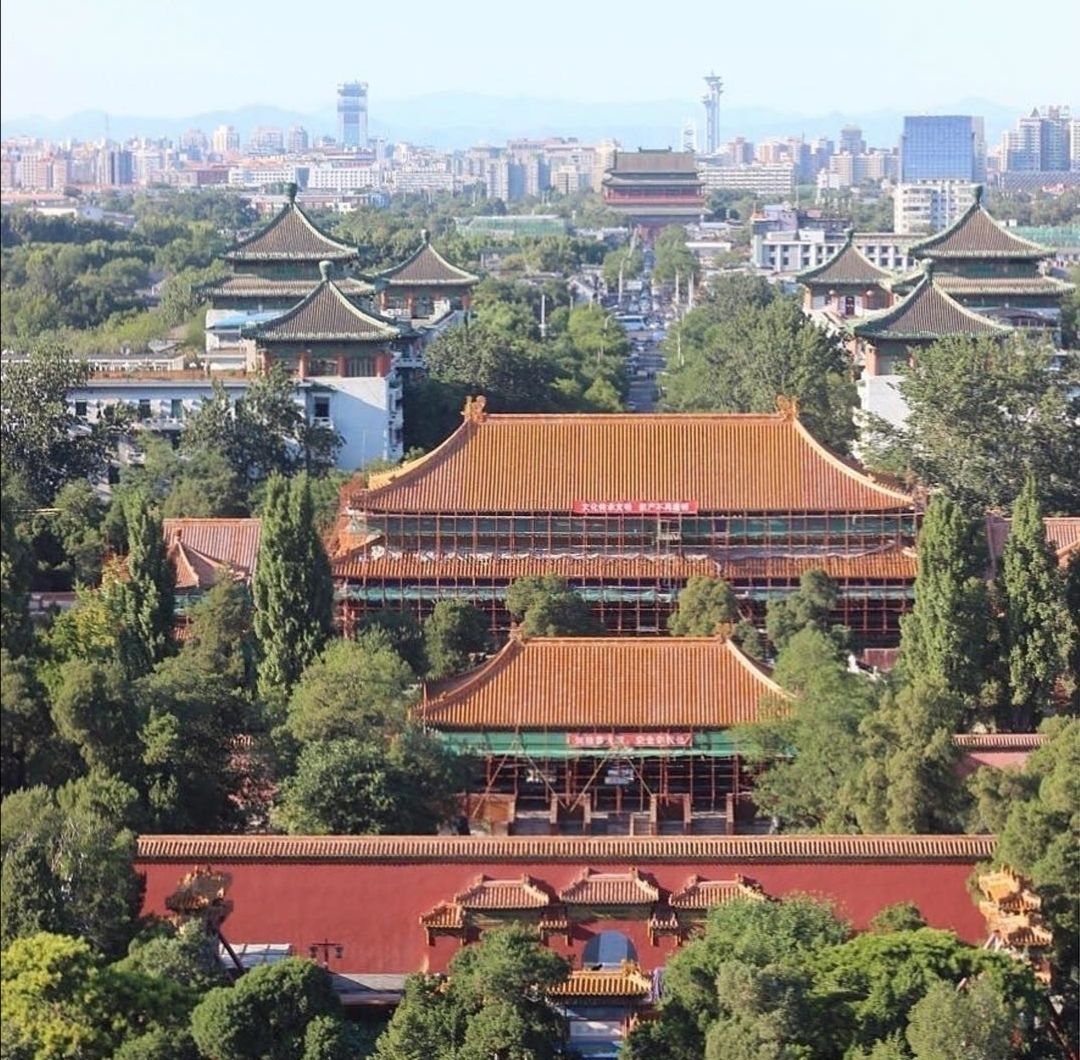
Some attractions were high on my priority list, and I was pleased to have seen them all. The Forbidden City felt as if it were from another world; I’d never seen anything like it. I was wondering what living in the Forbidden City must have looked like with the emperors of the Ming and Qing dynasties and all their servants. Around 980 buildings and thousands of rooms, yet I barely managed to visit the main halls in a few hours. No reproduction of the Forbidden City could’ve prepared me for its gigantic size and beauty.
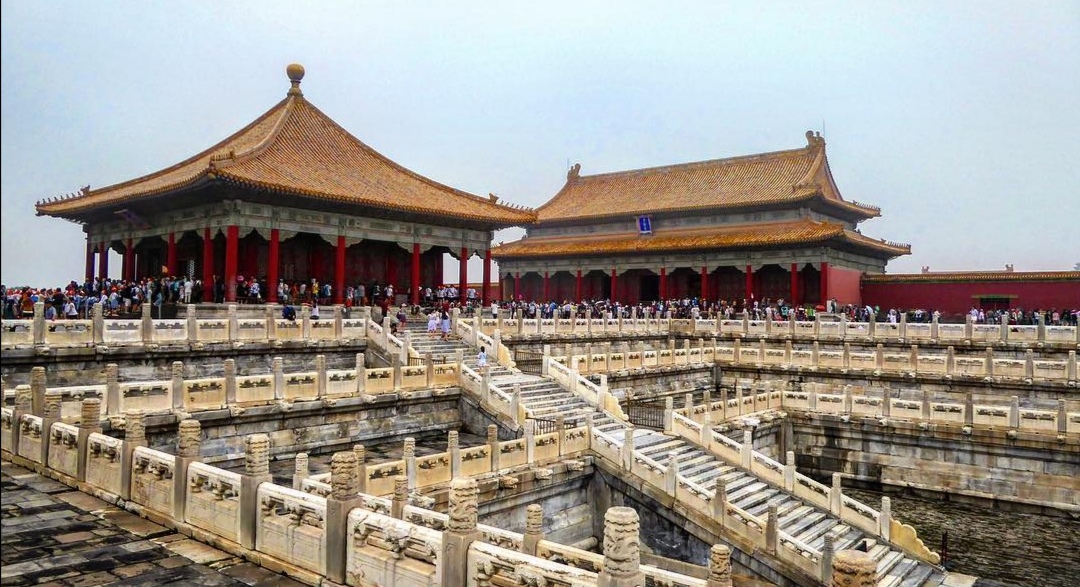
Beijing has lots to offer and I’m sure there’s something for everyone, whether you’re interested in museums, food, shopping, nightlife or outdoor activities. Thanks to my friend, I got to experience a little bit of everything in only five days and writing about all of it would require a separate chapter. If I had to choose one experience though that made my stay truly unique and to be remembered for a lifetime, it would be camping on the Great Wall.
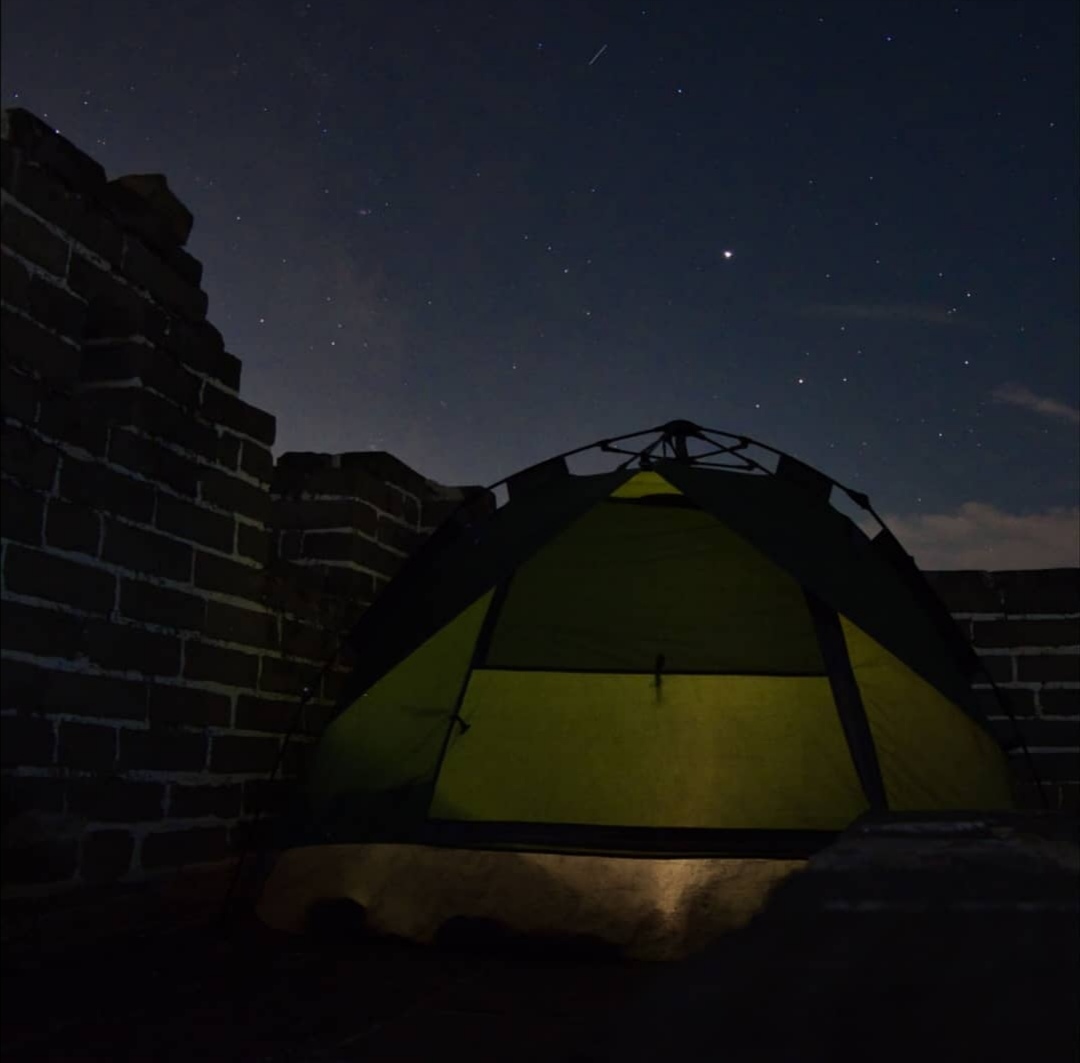
I never could have imagined that I’d be sitting around campfire and eating barbecue by the Great Wall of China. Beautiful colored sunsets and an early morning hike on the Great Wall with no tourists in sight. Sounds impossible, doesn’t it? We climbed for hours but it was totally worth it because the sights we got to see were incredible. It was one of those breathtaking moments when I simply felt grateful for being alive.
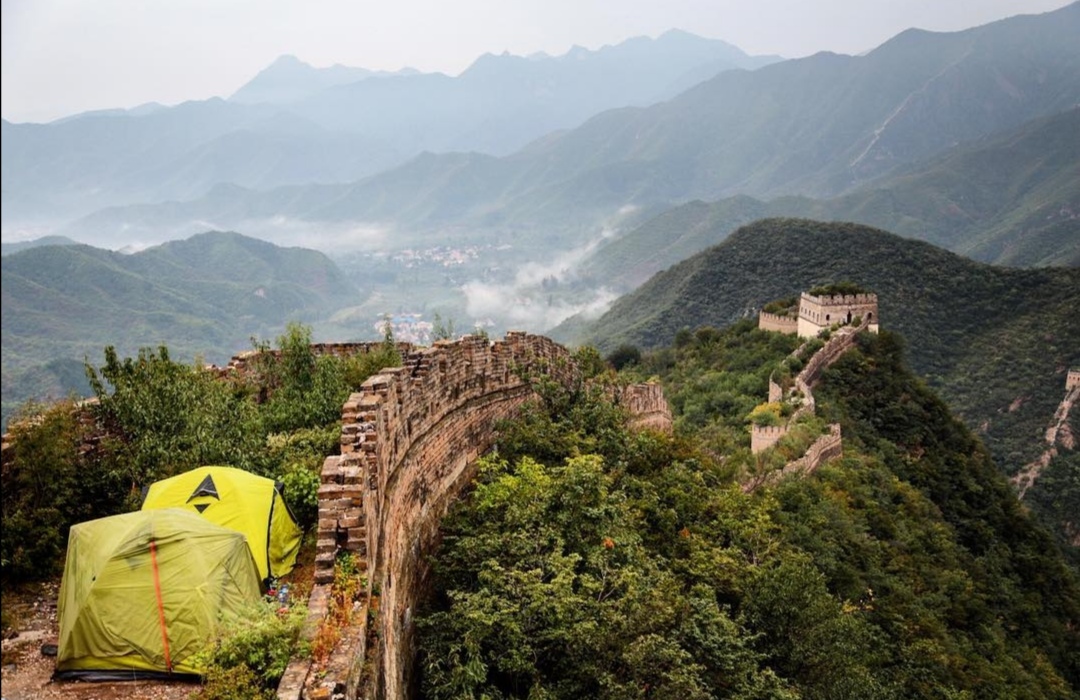
Another thing that should be on your list is trying Peking duck, a famous Beijing dish, first mentioned in recipes of a cook who worked for the Yuan dynasty in the first half of the 14th century. From the imperial menu Peking duck made it to Beijing restaurants’ menus where bites of a dish rich both in taste and history could be tried. I was told that there are two roasting traditions: placing a duck in a traditional closed clay oven or hanging it over burning wood. I was sure that either way it still tasted heavenly good. As we spread plum sauce over thin crepes, adding pieces of duck and its crispy skin, I already knew it would be love at first bite. With my stomach being madly in love, having to say goodbye to Beijing was hard.
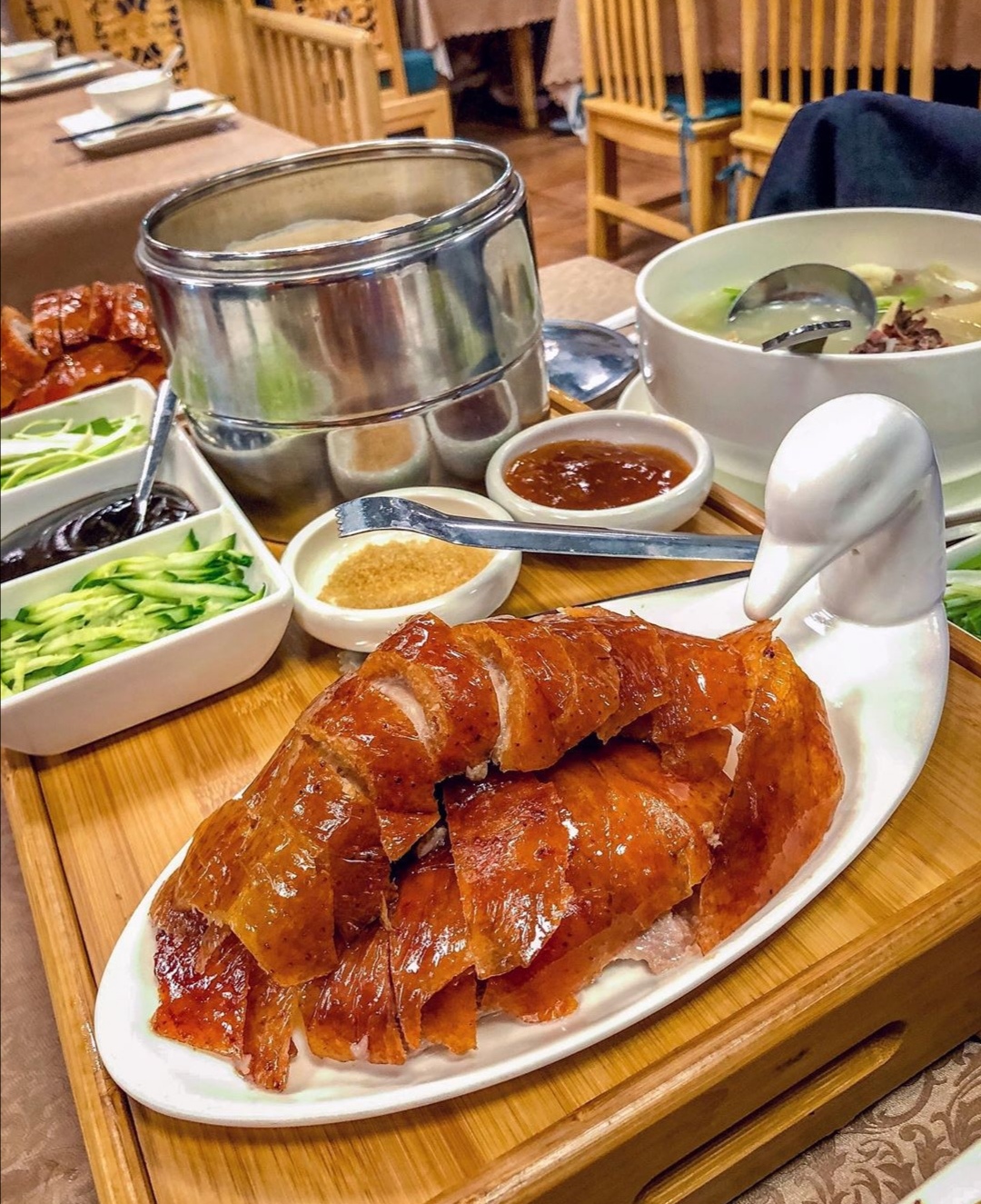
As my journey was coming to an end, I tried to count how many trains I traveled on, how many time zones I changed and all the currencies I used on this trip. I was leaving Beijing with some Chinese yuan notes, Russian rubles and Kazakh tenges left in my pockets, as well as some souvenirs I’d picked on the way, but what truly mattered were all wonderful memories created along the way. It was the best fall in my life and the longest trip I’d ever been on. Ha, China seems to have inspired me to talk in superlatives too.
I really hope everyone gets to experience the Silk Road and all its wonders at least once. It was a whole new world that words, no matter how much I tried to describe what I’d seen, simply can’t convey; you have to see it and above everything feel it yourself. With the revival of the Silk Route and the strategy of China to build an economic belt stretching all the way to Western Europe, I’m sure that we’ll be hearing a lot more about new railway tracks, trains and stations in the foreseeable future.